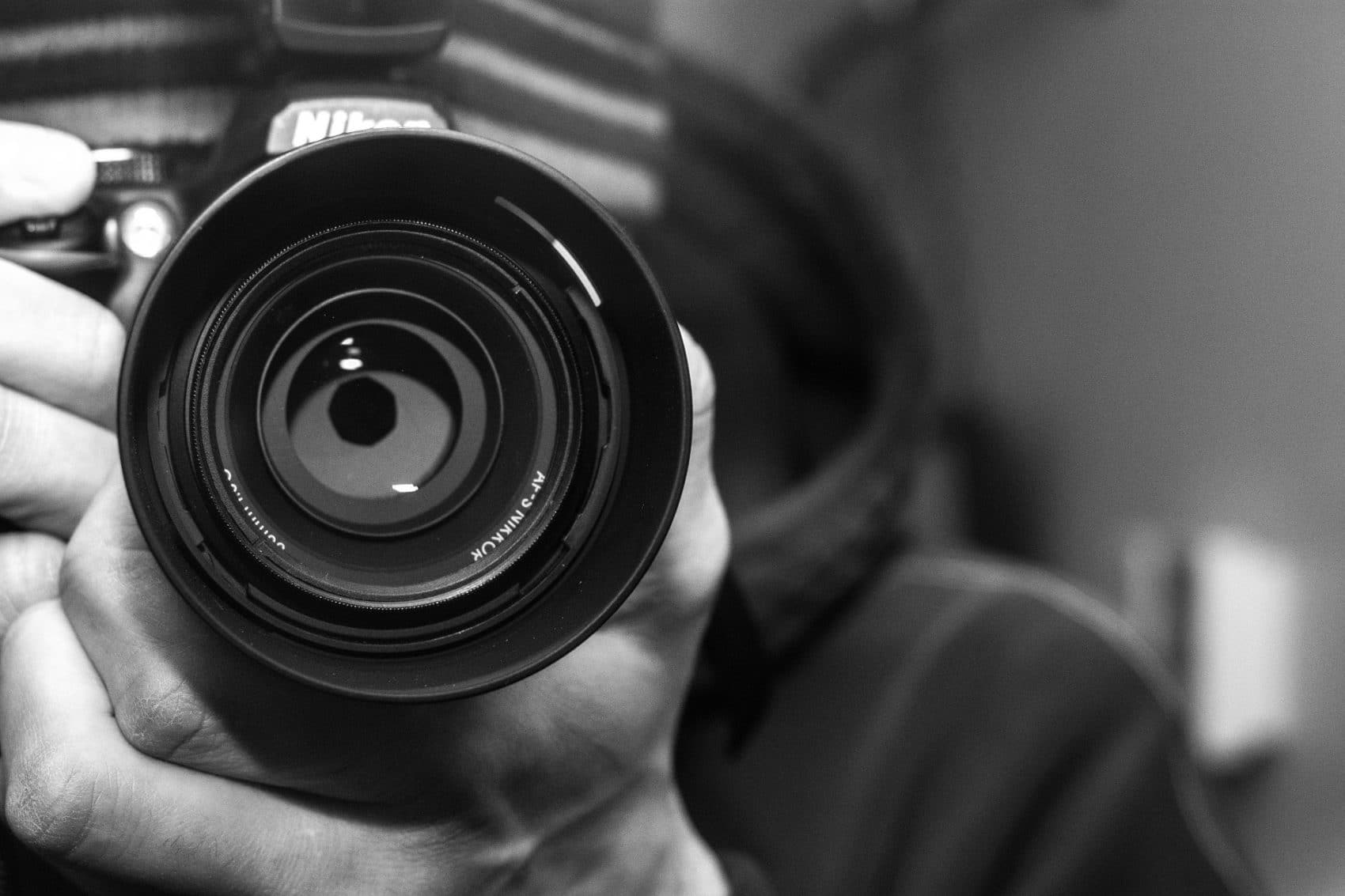Lorsque 34 photographes contemporains nous offrent
leur vision artistique du monde du travail
Reflet du monde du travail, de son évolution au cours du temps, les photographies présenteront des hommes et des femmes au travail dans l’exercice de divers métiers et sur différents continents. Œuvres de photographes de l’agence Magnum Photos (Raymond Depardon, Martin Parr, Jean Gaumy, Marc Riboud…), d’autres proviennent de photographes indépendants comme Jean-Michel Turpin et José Luis Lozano.
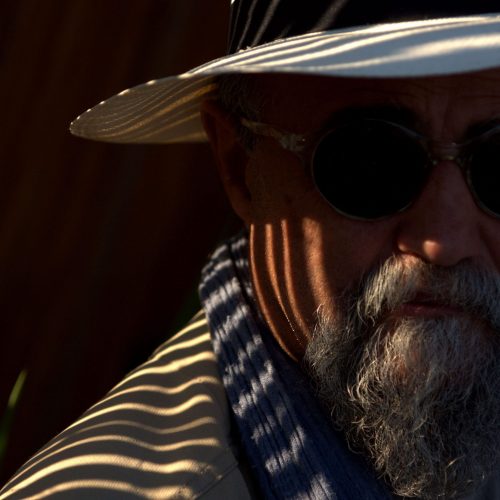
From 1978 to 1980, Abbas photographed the revolution in Iran, to which he returned in 1997 after seventeen years of voluntary exile. His book Iran Diary 1971-2002 is a critical interpretation of Iranian history, photographed and written as a private journal.
During his years of exile Abbas traveled constantly. Between 1983 and 1986 he journeyed through Mexico, attempting to photograph a country as a novelist might write about it. The resulting exhibition and book, Return to Mexico: Journeys Beyond the Mask, helped define his photographic aesthetic.
From 1987 to 1994, he focused on the growth of Islamism throughout the world. Allah O Akbar: A Journey Through Militant Islam, the subsequent book and exhibition, spanning twenty-nine countries and four continents, attracted special attention after the 9/11 attacks by Islamic jihadists. A later book, Faces of Christianity: A Photographic Journey (2000), and touring show, explored Christianity as a political, ritual and spiritual phenomenon.
Abbas’s concern with religion led him in 2000 to begin a project on animism, in which he sought to discover why non-rational ritual had re-emerged in a world increasingly defined by science and technology. He abandoned this undertaking in 2002, on the first anniversary of 9/11, to start a new long-term project about the clash of religions, defined as a culture rather than faith, which he believed are turning into political ideologies and therefore one of the sources of the strategic struggles of the contemporary world.
From 2008 to 2010 Abbas travelled the world of Buddhism, photographing with the same skeptical eye. In 2013, he concluded a similar long-term project on Hinduism.
Most recently before his death, Abbas was working on documenting Judaism around the world.
A member of Sipa from 1971 to 1973, then of Gamma from 1974 to 1980, Abbas joined Magnum Photos in 1981 and became a member in 1985.
Abbas died in Paris on April 25, 2018. He was 74.
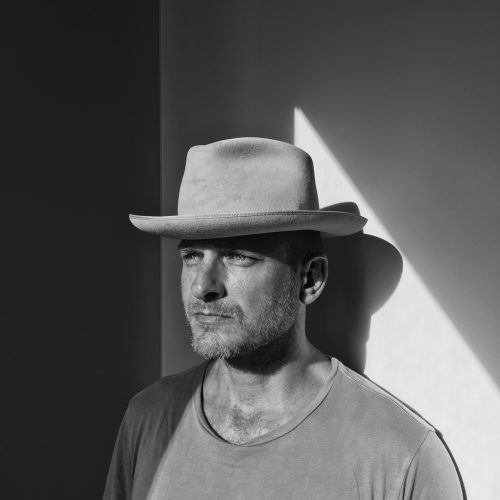
Christopher is the author of four monographs and lives between Brooklyn and Barcelona.
Nonfiction, 2003 (boxed paperback edn published by De.MO, Millbrook, 2004). HB, 179 x 196 mm, 104 pp, 54 col photos.
Capitolio. Editorial RM, Mexico City, 2009. HB, 298 x 332 mm, 132 pp, 89 b&w photos.
Son. Kehrer Verlag, Heidelberg, 2013. HB, 245 x 200 mm, 96 pp, 44 col photos.
Stump. Editorial RM, Mexico City, 2014.
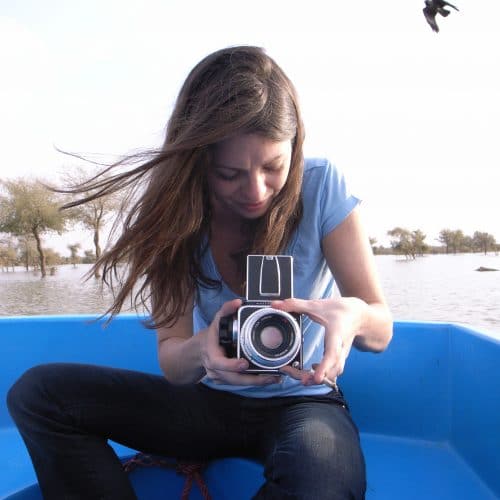
She began working as a photographer in 2003 after moving to Delhi and was based in India for two and a half years.
In 2006, she left for Italy to take up a one-year residency with Fabrica, during which she began working on a series about women and the East-West cultural divide. This work has taken her to the border between Europe and Asia, Iran and Saudi Arabia. She has received support from the Inge Morath Award, the National Media Museum, OjodePez-PhotoEspana Award for Human Values.
In 2010, she co-founded Fishbar, a space for photography in London with Philipp Ebeling.
Her first book Jeddah Diary, about young women in Saudi Arabia, was published in 2012.
She continues to return to India – where her long-term work has been supported by a grant from the Fondation Jean-Luc Lagardère in Paris – and to work in London where she lives.
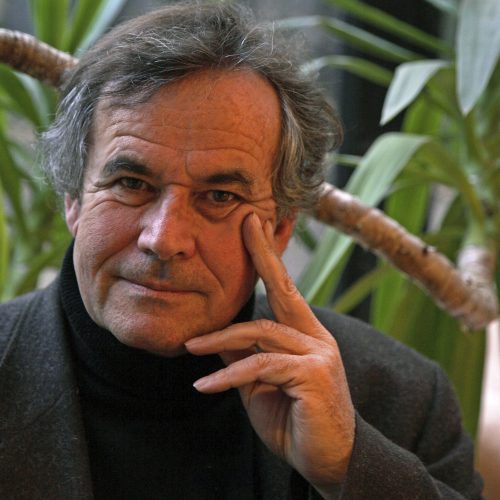
Bruno Barbey began his relationship with Magnum Photos in 1964. He served as Magnum vice president for Europe in 1978/1979 and as President of Magnum International from 1992 to 1995.
Over five decades Bruno Barbey has worked in all five continents and covered wars and conflicts in Nigeria, Vietnam, the Middle East, Bangladesh, Cambodia, Northern Ireland, Iraq and Kuwait. His work has appeared in the world’s major magazines and he has published over 30 books.
In 1999 the Petit Palais, Paris, organized a large solo exhibition of photographs that Bruno Barbey had taken in Morocco over a period of three decades.
In 2015/2016, La Maison Européenne de la Photographie, Paris, presented his retrospective exhibition which is currently circulating internationally. He published simultaneously his retrospective book Passages.
He has received numerous awards for his work, including the French National Order of Merit. His photographs are exhibited worldwide, and feature in numerous museum collections.
In 2016, Bruno Barbey became a member of the French Academy of Fine Arts, Institut de France.
Today he is working on a new project and photographing extensively in China.
www.brunobarbey.com
Books
2018 Au coeur de Mai 68, Text by Philippe Tesson, photographs by Bruno Barbey, Editions du Pacifique
2016 PASSAGES, Chinese version, Beijing, Post Wave Publishing
2016 PASSAGES, published by Edition de La Martiniere
2015 Photopoche, Acte Sud
2015 China, from Mao to Modernity, published by Editions Didier Millet
2014 Chine, published by Les éditions du Pacifique
2012 Bruno Barbey , Fotocep,published by Fotografevi
2012 China in Kodachrome 1973 – 1980, Beaugeste photo Gallery, Shanghai, China
2011 Oman 1971, The Empty Quarter Gallery
2010 Shanghai, boxed set
2008 1968, published by Fotografei, Istanbul, Turkey
2008 68 and May 68, Bruno Barbey’s notebook (with of 15″ film by Caroline Thienot Barbey), Creaphis, France
2003-2004 Maroc, Editions de la Martinière, France / My Morocco, Thames & Hudson, UK / Marokko, Knesebeck, Germany
2002 Les Italiens, Editions de la Martinière, France; The Italians, Abrams, USA
2001 Le Paris de Sartre et Beauvoir,photographie du Paris d’aujourd’hui by Bruno Barbey, published by Edition du Chene.
2000 Essaouira, Editions du Chêne, France
1999 Photo Poche, Editions Nathan, France
1998 Mai 68, Editions de la Différence, France
1997 Gens des nuages, with JMG Le Clézio, Editions Stock, France
1996 Fès, immobile, immortelle, Editions Imprimerie Nationale, France
1988 Portugal, Hoffmann & Campe, Germany
1984 Le Gabon, Editions du Chêne, France
1982 Pologne, Editions Arthaud, France / Poland, Thames & Hudson, UK / Polen, Hoffmann & Campe, Germany
1979 Bombay, Time & Life Books, Netherlands
1978 Nigeria, Editions Jeune Afrique, France
1976 Iran, Editions Jeune Afrique
1974 Ceylan, Editions André Barret, France
1968 Ecosse, Editions Rencontre, Switzerland
1967 Koweït, Editions Rencontre, Switzerland
1966 Kenya, Editions Rencontre, Switzerland
1966 Portugal, Editions Rencontre, Switzerland
1964 Camargue, Editions Rencontre, Switzerland
1964 Naples, Editions Rencontre, Switzerland
Films
2015 Maroc éternel, Caroline Thiénot-Barbey (28 min)
2015 Pologne, foi de l’impossible, 2015 , Caroline Thiénot-Barbey (20 min)
2015 Passages , Caroline Thiénot-Barbey (26 min)
2014 Apocalypse Koweït, Caroline Thiénot-Barbey (5 min)
2012 China en Kodachrome, Caroline Thiénot-Barbey (18 min)
2008 Mai 68 vu par Bruno Barbey, Caroline Thiénot
2005 Grand Angle, 2M, Maroc
2003 Panoramiques Maroc, Caroline Thiénot (betanum, 12 min)
2002 Les Italiens, directed by Caroline Thiénot (betanum, 10 min)
1996 Maroc sans Frontière, directed by Mostafa Bouazzaoui for Moroccan television
1988 Assignment in Morocco, BBC, directed by Clem Vallance (in conjunction with centenary of National Geographic)
1979 3 Jours, 3 Photographes, directed by F. Moscovitz (about Bruno Barbey, Jean Loup Sieff and Robert Doisneau)
1968 Mai 68 (16mm, B&W)

In Russia and elsewhere, he often focuses on isolated communities and enclaves. In 2005, with a grant from the Alicia Patterson Foundation, he started working on The Places We Live, a project on the growth of urban slums across the world, which combines still photography, projections, and voice recordings to create three-dimensional installations.
Bendiksen has received numerous awards, including the 2003 Infinity Award from the International Center of Photography, New York, and second place in the Daily Life Stories for World Press Photo, as well as first prize in the Pictures of the Year International Awards. His documentary of life in a Nairobi slum, Kibera, published in the Paris Review, won a National Magazine Award in 2007.
His editorial clients include National Geographic, Geo, Newsweek, The Independent on Sunday Review, The Sunday Times Magazine, The Telegraph Magazine, and The Rockefeller Foundation.
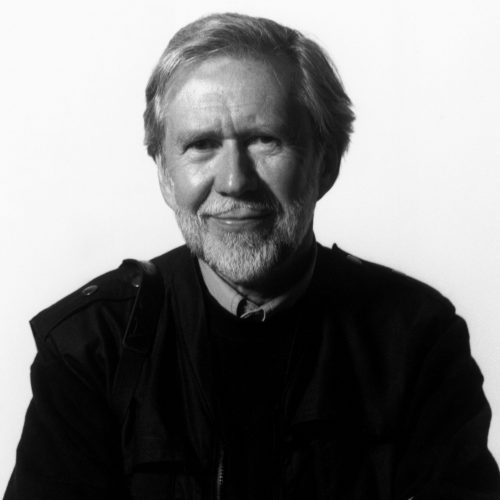
Henri Cartier-Bresson invited Ian Berry to join Magnum in 1962 when he was based in Paris. He moved to London in 1964 to become the first contract photographer for the Observer Magazine. Since then assignments have taken him around the world: he has documented Russia’s invasion of Czechoslovakia; conflicts in Israel, Ireland, Vietnam and the Congo; famine in Ethiopia; apartheid in South Africa. The major body of work produced in South Africa is represented in two of his books: Black and Whites: L’Afrique du Sud (with a foreword by the then French president François Mitterrand), and Living Apart (1996). During the last year, projects have included child slavery in Ghana and the Spanish fishing industry.
Important editorial assignments have included work for National Geographic, Fortune, Stern, Geo, national Sunday magazines, Esquire, Paris-Match and LIFE. Ian Berry has also reported on the political and social transformations in China and the former USSR.
Awards
2005 National photography magazine award for lifetime achievement in photography
1996 Made Honorary Fellow of the Royal Photographic Society
1990 Made Honorary Fellow, University of Lancashire
1981 Pix of Year, magazine news, Award from Missouri School of Journalism and National Press Photographers of America
1977 Nikon Photographer of Year Award (first ever)
1974 Awarded British Arts Council’s first major photographic bursary (led to his book, The English)
1969 Art Director’s Club of New York Award
1960 British Press Pictures, Feature Photographer of Year Award
1959 British Press Pictures, Feature Photographer of Year Award
1959 Nikon World Photo Contest Awards – 1st and 3rd
Exhibitions
2009 South Africa update in Wales
2007 Visa Pour L’Image, Perpignan – Child Slavery
2007 The Lowry Gallery– Water
2007 The Lowry Gallery – The North
2007 Guardian Gallery – A Look at Colour Magazines
2004 Living Apart at the Royal Armoury Museum, Leeds
2004 South Africa at the Brunei Gallery, London
2001 English Revisited at Focus Gallery, London
1998 Exhibition at Museum of Photography, Bradford
1997 Exhibition at Aix en Provence literary week
1996 Living Apart, Royal Photographic Society, Bath, England
1995 Main exhibition at Visa Pour L’Image, Perpignan
1986 The English, XYZ Gallery, Belgium
1986 South Africa, FNAC Gallery, Paris
1985 Contemporary British Photography, Museum of Modern Art, Paris
1984 Britain in 1984, National Museum of Photography
1983 Geographic colour prints at Olympus Galleries, Paris and Hamburg
1982 Year of India, joint exhibition at National Theatre
1979 Participated Magnum Exhibition, Tokyo
1977 Exhibition Hamburg Culture House
1976 Solo colour exhibition at Paris Photo Fair
1976 The English, Photographer’s Gallery, London
1973 Inside Whitechapel, First Photographic Exhibition at Whitechapel Art Gallery
1972 Photographers’ Gallery, London
1970 Personal Views, British Council Exhibition
Books
2008 Sold into Slavery
2008 Mar (The Sea)
2006 I Grandi Fotografi
1996 Living Apart (Phaidon) text by Archbishop Desmond Tutu
1992 Book on fishing port of Vigo
1991 Spanish book for Hologramme, Paris
1990 In Our Time: The World As Seen by Magnum Photographers
1989 Les Grands Travaux (book of modern French architecture)
1988 L’Afrique du Sud with text by Francois Mitterrand
1981 World Photography: 25 Great Photographers (by Bryn Campbell)
1978 The English (Penguin and Allen Lane)
1960 Book on black stage musical, King Kong
Films
2005 BBC profile on digital photography
1980 BBC TV series, Profile of a Photojournalist
1976 Profiled by the BBC in a TV documentary comparing the turn-of-century photographer Frank Sutcliffe with contemporary photographer
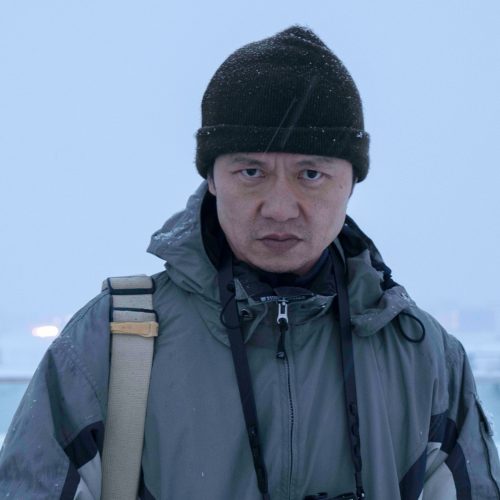
“Doubleness.” Chang’s investigation of the ties that bind one person to another draws on his own deeply divided immigrant experience. Born in Taiwan in 1961, Chang studied at Soochow University (B.A. 1984) and at Indiana University (M.S. 1990). Chang joined Magnum in 1995 and became a full member in 2001.

Her work often combines rigorous research and intimate storytelling. She was commissioned as the Nobel Peace Prize photographer in 2017 and created a solo show for the Nobel Peace Centre museum in Oslo on nuclear weapons, combining a video installation and still photography. Her photo and film work has been shown in the United States, Europe and Asia, including at the Istanbul Biennale in 2017, Institute of Contemporary Arts Singapore, PhotoVille in New York, the Annenberg Space For Photography in Los Angeles, Southeastern Center For Contemporary Art in North Carolina, Tom Blau gallery in London, Objectifs in Singapore and the Arko Art Center and Gyeonggi Museum of Modern Art in South Korea. Her work has also been screened at Les rencontres d’Arles and Visa pour l’Image festivals in France, and the Singapore International Film Festival. She does commissioned work for global publications, such as The New York Times Magazine, TIME, National Geographic, The New Yorker and Harpers.
Chi Yin won the Chris Hondros Award in 2018. She was an inaugural Magnum Foundation Social Justice and Photography fellow in 2010 and a finalist for the W. Eugene Smith Grant in Humanistic Photography in 2013. In 2014, she was Her World Magazine’s “Young Woman Achiever of the Year”.
She was a member of VII Photo Agency from 2014 to 2017, and on its mentorship programme from 2011 to 2014.
Chi Yin read history at the London School of Economics and Political Science. She was a newspaper staff writer and foreign correspondent for nine years before quitting to be an independent practitioner. She is particularly interested in history, memory, conflict and migration and its consequences, working with photography, film, sound, text and archival material, in a multidisciplinary practice.
Chi Yin became a Magnum nominee member in 2018.

De Keyzer, who has exhibited his work regularly in European galleries, is the recipient of a large number of awards including the Book Award from the Arles Festival, the W. Eugene Smith Award (1990) and the Kodak Award (1992).
De Keyzer likes to tackle large-scale projects and general themes. A basic premise in much of his work is that, in overpopulated communities everywhere, disaster has already struck, and infrastructures are on the verge of collapse. His style is not dependent on isolated images; instead, he prefers an accumulation of images which interact with text (often taken from his travel diaries). In a series of large tableaux, he has covered India, the collapse of the Soviet Union and – more recently – modern-day power and politics.
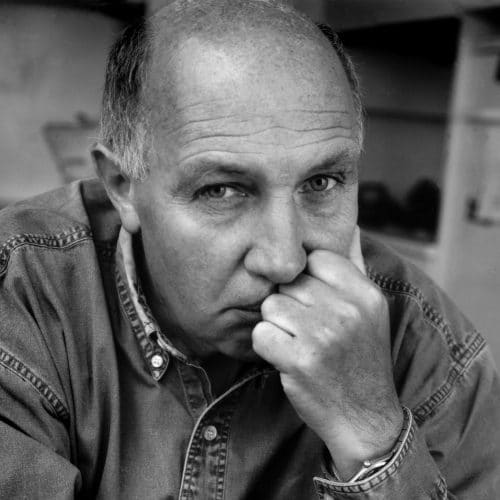
He joined the Dalmas agency in Paris in 1960 as a reporter, and in 1966 he co-founded the Gamma agency, reporting from all over the world. From 1974 to 1977, as a photographer and filmmaker, he covered the kidnap of a French ethnologist, François Claustre, in northern Chad. Alongside his photographic career, he began to make documentary films: 1974, Une Partie de Campagne and San Clemente.
In 1978, Depardon joined Magnum and continued his reportage work until the publication of Notes in 1979 and Correspondance New Yorkaise in 1981. In that same year, Reporters came out and stayed on the programme of a cinema in the Latin Quarter for seven months. In 1984, he took part in the DATAR project on the French countryside.
While still pursuing his filmmaking career, he received the Grand Prix National de la Photographie in 1991. His films also won recognition: in 1995 his film Délits Flagrants, on the French justice system, received a César Award for best documentary, and in 1998 he undertook the first in a series of three films devoted to the French rural world. The Maison Européenne de la Photographie in Paris mounted an important exhibition of his work in 2000. The sequel to his work on French justice was shown as part of the official selection at the Cannes Film Festival in 2004.
As part of an initiative by the Fondation Cartier for contemporary art, Depardon made an installation of films on twelve large cities, shown in Paris, Tokyo and Berlin between 2004 and 2007. In 2006, he was invited to be artistic director of the Rencontres Internationales d’Arles. He is working on a photographic project on French territory which is due to be completed in 2010. He has made eighteen feature-length films and published forty-seven books.
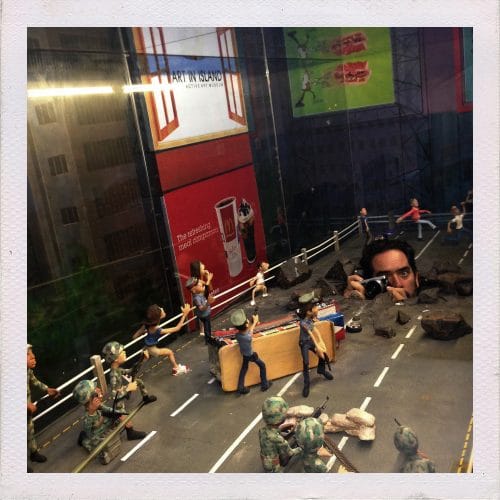
Immediately after graduating from Robert-Schuman Gymnasium, Cham (specializing in English, French, and history ) he left Germany, always combining his travels and attempts to become a photographer with studying languages. Spanish in Avila, Czech in Prague, Russian in Moscow.
In 1993, he ended up in Tbilisi, Georgia, staying on until 1998. At this time he began to discover the Caucasus, it’s conflicts (Chechnya, Karabakh, Abkhazia), people and culture which resulted in the publishing of his book, Kavkaz in 2010. The album combines pictures with excerpts of classic 19th century Russian literature (Tolstoy, Pushkin, Lermontov).
Affiliated with the Paris photographic agency Wostok Press, he began to cover news, especially the Kosovo crisis in 1999, mostly on assignment for US News and world reports.
Based again in Moscow since 2000, Dworzak returned to Chechnya. His dramatic pictures of the Fall of Grozny were widely published and received several awards. He also continued his exploration of the North Caucasus.
Dworzak became a Magnum nominee in 2000 and a full member in 2004. In the years following the 9/11 attacks, he spent time covering the wars in Afghanistan and Iraq as well as their impact on the US.
During a several-months assignment in Afghanistan for The New Yorker, he discovered studio portraits of the Taliban; these images would form his first book, Taliban.
The images that were taken during his many assignments in Iraq, most of which were shot for TIME Magazine, were used to create his next book: M*A*S*H* IRAQ.
From 2005 to 2008, as a TIME Magazine contract photographer, Dworzak covered many major international news stories including: Macedonia, Pakistan, Chechnya, Sri Lanka, Nigeria, Lebanon, Haiti, Chad, C.A.R., the London Attacks, Ethiopia, Iran, US presidential campaigns, Hurricane Katrina, and the revolutions in the former Soviet republics of Georgia, Kyrgyzstan and Ukraine.
During breaks from conflict areas and war zones he regularly photographed Fashion Weeks in major cities.
In 2006, Thomas photographed the New York Marathon while participating himself.
Thomas remained in Georgia after the 2008 war with Russia. This would lead to the Magnum Group project Georgian Spring, which was a starting point for a new, several-year-long engagement with the “New Georgia” under President M. Saakashvili. In 2012, Thomas photographed Nowrooz celebrations in Georgia.
Dworzak spent 2009-2010 in Afghanistan, documenting the deployment of ISAF troops and their return home. In 2009, he also visited Iran to photograph Ashura.
A National Geographic assignment on the Sochi Olympics became later the book Beyond Sochi.
In 2013, a commission for the Bruges Museum led him to photograph the memory of WWI. This has since become an ongoing project concerning the legacy of the First World War around the world, which he plans to finish in 2018, 100 years after the end of the conflict.
Always an avid collector, Thomas started gathering Instagram screenshots of a variety of subjects and has been grouping them together into ever-growing collections of Instagram artist scrapbooks.
Besides his personal stories, Thomas Dworzak continues to cover international stories, such as the DMZ in Korea, Cuba, Colombia, China, Liberia, Arab Spring in Egypt, the war in Libya and most recently, the refugee crisis in Europe and the November 2015 Paris terror attacks.
Covering the heightened migration crisis in Europe since 2015 lead him to initiate the “Europa” guide for refugees. When covering the escalation of the refugee crisis in 2015 he concieved the idea of “Europe – a photographic guide for refugees” which was produced and distributed free of charge to migrants with the support of a Magnum Foundation Emergency Grant and AFAC in 2016.
Dworzak has also been teaching a number of workshops (Magnum, Hong Kong, Rio, Shanghai, Open Society Documentary Project, La Caixa Fotopress).

He joined Magnum in 1990, and his photographs began appearing in newspapers and magazines around the world.
In the same period, he started traveling and photographing extensively around the Balkans. The work in the Balkans won him the Mother Jones Award (San Francisco, CA) for work in progress. Upon the completion of his Balkans project in 1994, he became a full member of Magnum. His book In The Balkans was published in 1995 in New York (Abrams) and in Athens (Libro).
In the 1990s, he started working on borders and crossings, photographing the inhabitants of the ‘Green Line’ in Cyprus, the irregular migrants on the Greek-Albanian borderline, and the mass migration of ethnic Albanians fleeing Kosovo.
In the mid-1990s, he started photographing the Roma and other minorities. In 2000, he completed a book project on the Aegean islands storytellers, commissioned by the University of the Aegean. A retrospective of his work titled Economopoulos, Photographer was published in 2002 and later exhibited at the Benaki Museum, Athens.
Returning to Turkey, he pursued his long-term personal project, where he received the Abdi Ipektsi award (2001), for peace and friendship between Greek and Turkish people.
He has recently turned to the use of color. Currently, he is spending most of his time away from Greece, traveling, teaching and photographing around the world, in the context of his long-term On The Road project.
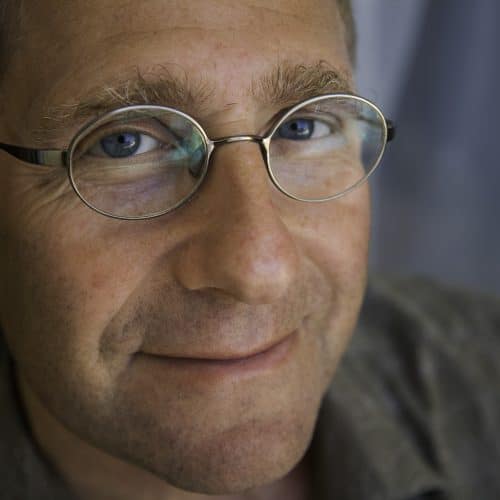
During his time at Sygma (1980–85) he absorbed the skills of news photography, and also followed Henri Cartier-Bresson’s approach to photography; as he puts it, “curious, gentle, surreal with beautiful compositions – his work influenced just about everything I attempted.”
In his words, “At Sygma photographers arrived from Algeria, Iraq and Lebanon unloading their Domke bags and their stories. Later I felt confident enough to tell my own. I covered the 1983 Nigerian exodus, the Heysel Stadium disaster, the Beirut bombing of the French and American bases, the civil war there and in Sri Lanka, the conflict in Northern Ireland and finally the 1984–85 famine in Sudan.”
In Khartoum, Stuart shared a flat with Sebastião Salgado for a few weeks. Salgado worked with Magnum Photos in Paris – founded by Henri Cartier-Bresson, David Seymour, Robert Capa and George Rodger. Stuart was invited to join in the summer of 1985 and has been a full member since 1989, serving most recently as the agency’s elected president between 2006-2009.
It was during 1989 that Stuart took his acclaimed photographs in Beijing’s Tiananmen Square, where a demonstration for freedom ended in a massacre. After that, he began to move away from news into magazine feature photography.
Between 1990 and 2004 he photographed about twenty stories for National Geographic Magazine. During this time, Stuart decided to pursue a better theoretical understanding of some of the issues he confronted, by embarking on a period of academic study in 1997. He graduated with a first class degree in Geography from Oxford University and went on to complete his doctoral thesis there in 2002.
In 2005, he undertook the series of large-format photographs of Europe’s changing landscape that has led to his book, Footprint: Our Landscape in Flux (Thames & Hudson, 2008).
During 2009, Stuart traveled to Mali and the Middle East and co-curated the Noorderlicht Photo Festival 2009 with an exhibition entitled Point of No Return on the continuing conflict in Gaza. In a change of approach to documentary, Stuart undertook a course of training at the UK’s National Film and Television School in observational documentary. Subsequently, Stuart worked on his first long-form documentary Runners, together with film work for ESPN.
During 2010, Stuart continued with his project Farmscapes supported and funded by the Scottish National Galleries. The work was first exhibited at the Scottish National Portrait Gallery in 2012. During 2010-13 Stuart completed a long-term landscape project Narcissus, exhibited during in 2012/13 in Ålesund-Norway, Kristiansund – Norway, London, Paris, and Edinburgh.
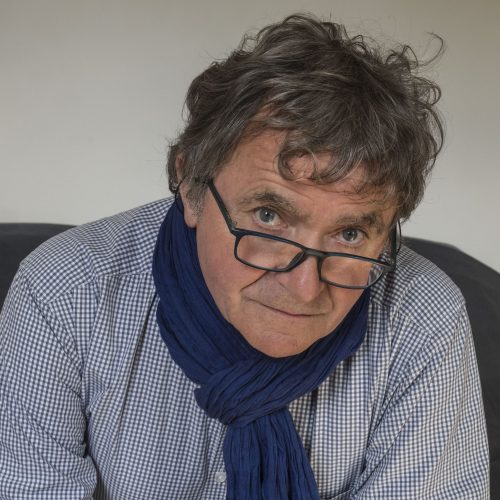
In 1975, he undertook two long works on subjects never before broached in France: the first L’Hopital was published in 1976; the second, Les Incarcérés, on French prisons was made in 1976 and published in 1983 with extracts from his personal journal written in the first person.
In 1977, he joined Magnum after he was noticed at the photography festival, Rencontres d’Arles, in 1976 by Marc Riboud and Bruno Barbey.
In 1984 he made his first film La Boucane, which was nominated for a Caesar in 1986 for best documentary.
Other often award-winning films followed, all broadcast by French and European television.
This same year, he started a cycle of winter voyages aboard so-called “classic” trawlers which continued until 1998 and led to the publication in 2001 of Pleine Mer.
His first trip to Iran was during the war with Iraq in 1986. He undertook ongoing trips there until 1997.
In 1987, he made the film Jean-Jacques, spending two years chronicling the town of Octeville-sur-Mer, where he lived, through the eyes of Jean-Jacques, who was mistakenly considered the village idiot.
In 1994 he made his third film Marcel, Prêtre shot in Raulhac, Cantal and Auvergne over a period of several years.
He received the Prix Nadar in 2001.
Since 2005 he has undertaken location scouting and shoots for the film Sous Marin spending four months underwater aboard a nuclear attack submarine.
He was officially named Peintre de la Marine in 2008.
His numerous works on human confinement have been coupled with a more contemplative photographic approach in recent years. In 2008, after his film aboard a nuclear submarine, he started photographic reconnaissance work that has already taken him from the arctic seas to the contaminated lands of Chernobyl and Fukushima. Concurrently, for the same project, he started a series of mountain landscapes and, in 2010, he received the Prix Nadar (for the second time) rewarding the book D’après Nature published with these pictures. The same year he was aboard the last and most modern submarine dedicated to nuclear deterrence.
In early 2012, he was in Fukushima and then again in the Arctic lands.
He has been living in Fécamp, Haute-Normandie (Upper Normandy, France) since 1995.
Jean Gaumy’s work and travels can be followed through his Facebook page.

Magnum began to distribute Hoepker’s archive photographs in 1964. He worked as cameraman and producer of documentary films for German television in 1972, and from 1974 collaborated with his wife, the journalist Eva Windmoeller, first in East Germany and then in New York, where they moved to work as correspondents for Stern in 1976. From 1978 to 1981 Hoepker was director of photography for the American edition of Geo.
Hoepker worked as art director for Stern in Hamburg between 1987 and 1989, when he became a full member of Magnum. Specializing in reportage and stylish color features, he received the prestigious Kulturpreis of the Deutsche Gesellschaft für Photographie in 1968. Among many other awards for his work, he received one in 1999 from the German Ministry of Foreign Aid for Death in a Cornfield, a TV film on Guatemala.
Hoepker currently lives in New York. He shoots and produces TV documentaries together with his second wife, Christine Kruchen. He was president of Magnum Photos from 2003 to 2006. A retrospective exhibition, showing 230 images from fifty years of work, toured Germany and other parts of Europe in 2007.
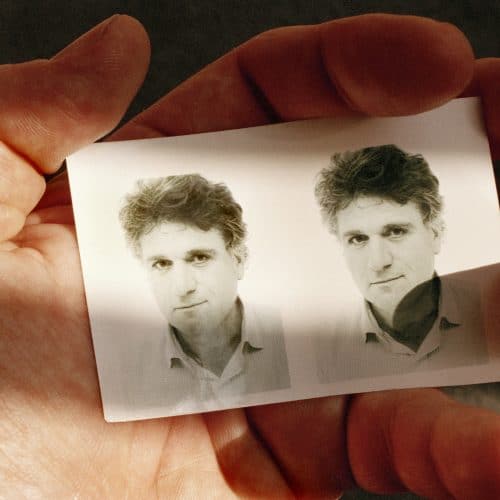
After working for two years in New York he was offered his first and last role in the theatre, acting in French in Marseille and Paris, where he settled, helping found the Viva agency in 1972. In 1975 he became an associate member of Magnum Photos, and a full member two years later. He subsequently served as vice-president and president.
Kalvar has done extensive personal work in America, Europe, Asia; notably in France, Italy, England, Japan and the United States, supporting himself with journalistic and commercial assignments. He has a long-term unfinished project in Rome.
In 1980 Kalvar had a one-man show at Agathe Gaillard gallery in Paris and has participated in many group shows. A major retrospective of his work was shown at the Maison Européenne de la Photographie in 2007, accompanied by his book Earthlings.
Kalvar’s photographs are marked by a strong homogeneity of aesthetic and theme. His images frequently play on a discrepancy between the banality of a real situation and a feeling of strangeness that emerges from a particular choice of timing and framing. The result is a state of tension between two levels of interpretation, attenuated by a touch of humor.
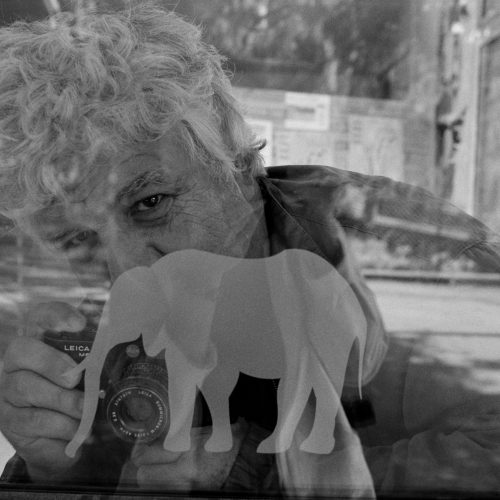
Two years later he was hired by the weekly Jeune Afrique as picture editor and photographer; he did his first reportages in Francophone Africa, including Chad, Cameroon, and Niger.
In 1971, he entrusted his archives to Vu, recently founded by Pierre de Fenoyl, and in 1972, he co-founded the co-operative Viva agency but left it three years later. Le Querrec joined Magnum in 1976.
In the late 1970s he co-directed two films, and in 1980 directed the first photographic workshop organized by the City of Paris. During the Rencontres d’Arles in 1983, he created a new form of show by projecting photographs alongside a live quartet of jazz musicians, repeating the experiment in 1993 and 2006.
Le Querrec has undertaken numerous reportages on the Concert Mayol in Paris, subjects in China and Africa, and North American Indians. He punctuates his work with breaks devoted to jazz (festivals, clubs and tours), and has traveled through twenty-five African countries with the Romano-Sclavis-Texier trio.
Le Querrec’s background in jazz has informed his photography. He sees everyday scenes as a musical score, played or activated by natural forces. Sun rays in a café could be a cry or a trumpet call; Spanish workers resting on the edge of a limestone quarry are musical notations in a solo piece.
Le Querrec has also devoted much time to teaching workshops and classes in France and other countries. He has exhibited regularly throughout the world.

Photographe indépendant, il enseigne depuis 2014 la photographie en pose longue à l’École de Photographie de l’Université de Cadix et collabore avec des maisons d’éditions. Il s’est également intéressé à la photographie comme médiation dans une relation thérapeutique.
En 2009, José Luis Lozano a reçu le 1er prix national du Concours photographique de la Croix-Rouge Espagnole. Il a été présent dans l'exposition inaugurale de l'Année Internationale de la Lumière organisée par l'UNESCO en 2015 à Paris, ainsi qu’au PHOTOKINA de Cologne en 2016. En 2016, il a été artiste invité au VIIIe Festival photographique des Nuits de Pierrevert, dans les Alpes de Haute-Provence.
https://www.flickr.com/photos/joseluislozano/
José Luis Lozano was born in 1989 in Xérès, Spain. Long exposure photography is at the heart of his creations. During his time in France from 2011 to 2018, his encounters with notably Susana Giron and Stéphane Kossmann were critical in his approach to documentary photography.
Freelance photographer, he teaches long exposure photography since 2014 at the School of Photography of the University of Cadix and collaborates with publishing houses. He has also shown an interest in photography as a mediating tool in a therapeutic relationship.
In 2009, José Luis Lozana has received the 1er prix national du Concours photographique de la Croix-Rouge Espagnole. He was present at the inaugural exhibition of the Année Internationale de la Lumière organised by the UNESCO in 2015 in Paris, as well as at the PHOTOKINA of Cologne in 2016. In 2016, he was an invited artist to the 7th Festival photographique des Nuits de Pierrevert, in the Alps of Haute Provence.
https://www.flickr.com/photos/joseluislozano/
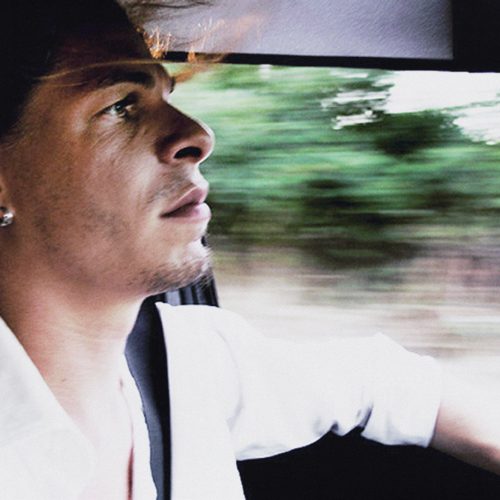
Majoli graduated from art school in 1991. Three years later, he made an intimate portrayal of the closing of an asylum for the insane on the island of Leros, Greece, a project that became the subject of his first book, Leros.
In 1995 Majoli went to South America for several months, photographing a variety of subjects for his ongoing personal project, Requiem in Samba. He started the project Hotel Marinum in 1998, on life in harbour cities around the world, the final goal of which was to perform a theatrical multimedia show. That same year he began making a series of short films and documentaries.
After becoming a full member of Magnum Photos in 2001, Majoli covered the fall of the Taliban regime in Afghanistan, and two years later the invasion of Iraq. He continues to document various conflicts worldwide for Newsweek, The New York Times Magazine, Granta and National Geographic.
Majoli, in collaboration with Thomas Dworzak, Paolo Pellegrin, and Ilkka Uimonen, had an extremely successful exhibition and installation Off Broadway in New York in 2004, which travelled to France and Germany. He then became involved in a project for the French Ministry of Culture entitled BPS, or Bio-Position System, about the social transformation of the city of Marseilles. His project, Libera Me, is a reflection on the human condition.
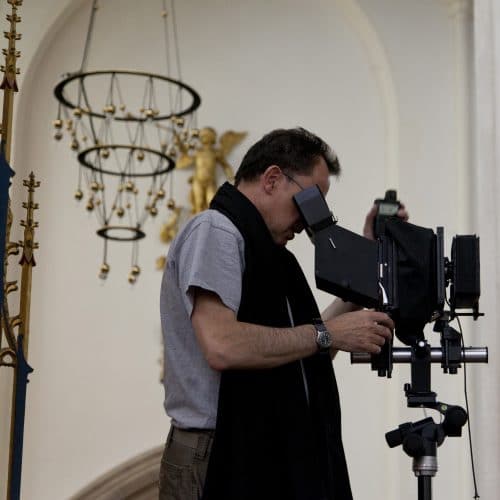
After those days, Marlow’s aesthetic shifted – in that he made mainly color photographs – but his approach was unchanged. The color of incidental things became central to his pictures in the same way that the shape and mark of things had been central to his black-and-white work.
Marlow had come full circle. He started his career as an international photojournalist, returned to Britain to examine his own experience, and discovered a new visual poetry that enabled him to understand his homeland. Having found this poetry, he took it back on the road: he photographed as much in Japan, the USA and elsewhere in Europe as he did in the UK.
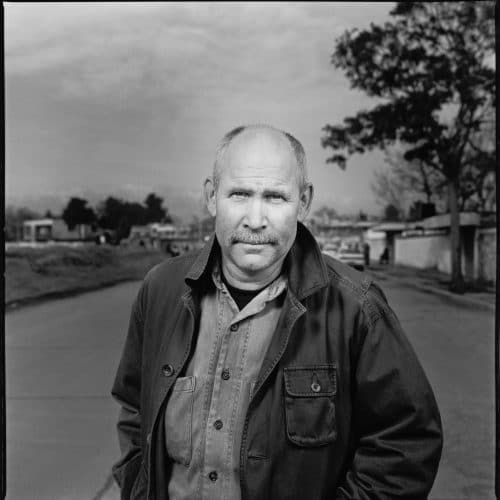
Born in a suburb of Philadelphia, Pennsylvania; McCurry studied film at Pennsylvania State University, before going on to work for a local newspaper. After several years of freelance work, McCurry made his first of what would become many trips to India. Traveling with little more than a bag of clothes and another of film, he made his way across the subcontinent, exploring the country with his camera.
It was after several months of travel that he found himself crossing the border into Pakistan. There, he met a group of refugees from Afghanistan, who smuggled him across the border into their country, just as the Russian Invasion was closing the country to all western journalists. Emerging in traditional dress, with full beard and weather-worn features after weeks embedded with the Mujahideen, McCurry brought the world the first images of the conflict in Afghanistan, putting a human face to the issue on every masthead.
Since then, McCurry has gone on to create stunning images over six continents and countless countries. His work spans conflicts, vanishing cultures, ancient traditions and contemporary culture alike – yet always retains the human element that made his celebrated image of the Afghan Girl so powerful.
McCurry has been recognized with some of the most prestigious awards in the industry, including the Robert Capa Gold Medal, National Press Photographers Award, and an unprecedented four first prize awards from the World Press Photo contest, to name but a few.
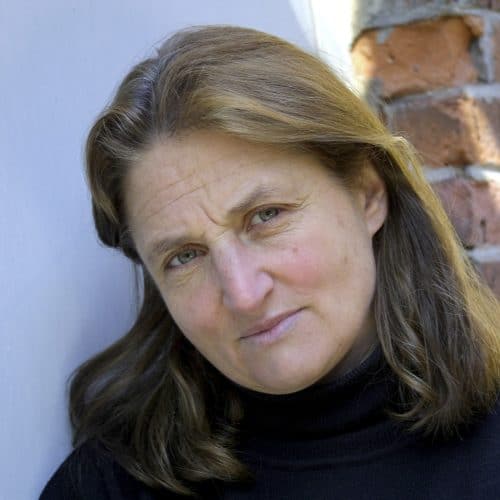
Meiselas joined Magnum Photos in 1976 and has worked as a freelance photographer since then. She is best known for her coverage of the insurrection in Nicaragua and her documentation of human rights issues in Latin America, which were published widely throughout the world. In 1981, Pantheon published her second monograph, Nicaragua: June 1978 – July 1979 which was reprinted by Aperture, fall 2008.
Meiselas served as an editor and contributor to the book El Salvador: The Work of Thirty Photographers (Writers & Readers, 1983) and edited Chile from within (W.W. Norton, 1991) featuring work by photographers living under the Pinochet regime. She has co-directed two films: Living at Risk: The Story of a Nicaraguan Family (1986) and Pictures from a Revolution (1991) with Richard P. Rogers and Alfred Guzzetti. In 1997, she completed a six-year project curating a 100-year photographic history of Kurdistan, and integrating her own work into the book entitled Kurdistan: In the Shadow of History (Random House, 1997; reprinted by the University of Chicago Press, 2008). Meiselas then created the website, www.akaKURDISTAN.com, an online archive of collective memory; as well as an exhibition that launched at the Menil Collection in Houston, and traveled for eight years to several venues in the United States and Europe
Her 2001 monograph, Pandora’s Box (Magnum Editions/Trebruk) which explores a New York S & M club, has been exhibited both at home and abroad. In 2003, Encounters with the Dani was featured as an installation in the International Center of Photography’s Triennial Strangers and co-published by ICP/Steidl Verlag. The book explores a 60-year history of outsiders’ discovery and interactions with the Dani, an indigenous people of the highlands of Papua in Indonesia.
Meiselas has had one-woman exhibitions in Paris, Madrid, Amsterdam, London, Los Angeles, Chicago and New York. Her work is included in American and international collections. Honorary awards of recognition include: the Robert Capa Gold Medal for “outstanding courage and reporting” by the Overseas Press Club for her work in Nicaragua (1979); the Leica Award for Excellence (1982); the Engelhard Award from the Institute of Contemporary Art (1985); the Maria Moors Cabot Prize from Columbia University for her coverage of Latin America (1994); the Hasselblad Foundation Photography prize (1994) and most recently, the Cornell Capa Infinity Award (2005). In 1992, she was named a MacArthur Fellow.
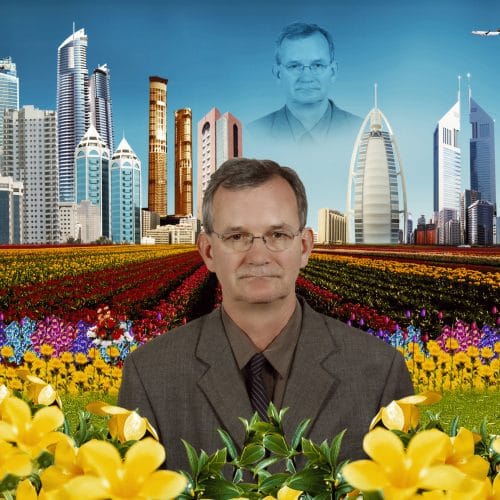
At first glance, his photographs seem exaggerated or even grotesque. The motifs he chooses are strange, the colours are garish and the perspectives are unusual. Parr’s term for the overwhelming power of published images is “propaganda”. He counters this propaganda with his own chosen weapons: criticism, seduction and humour. As a result, his photographs are original and entertaining, accessible and understandable. But at the same time they show us in a penetrating way how we live, how we present ourselves to others, and what we value.
Leisure, consumption and communication are the concepts that this British photographer has been researching for several decades now on his worldwide travels. In the process, he examines national characteristics and international phenomena to find out how valid they are as symbols that will help future generations to understand our cultural peculiarities. Parr enables us to see things that have seemed familiar to us in a completely new way. In this way he creates his own image of society, which allows us to combine an analysis of the visible signs of globalisation with unusual visual experiences. In his photos, Parr juxtaposes specific images with universal ones without resolving the contradictions. Individual characteristics are accepted and eccentricities are treasured.
The themes Parr selects and his inimitable treatment of them set him apart as a photographer whose work involves the creation of extensive series. Part of his unusual strategy is to present and publish the same photos in the context of art photography, in exhibitions and in art books, as well as in the related fields of advertising and journalism. In this way, he transcends the traditional separation of the different types of photography. Thanks to this integrative approach, as well as his style and his choice of themes, he has long served as a model for the younger generation of photographers.
Martin Parr sensitises our subconscious – and once we’ve seen his photographs, we keep on discovering these images over and over again in our daily lives and recognising ourselves within them. The humour in these photographs makes us laugh at ourselves, with a sense of recognition and release.
Introduction text above by Thomas Weski
Biography
Martin Parr was born in Epsom, Surrey, UK, in 1952. When he was a boy, his budding interest in the medium of photography was encouraged by his grandfather George Parr, himself a keen amateur photographer.
Martin Parr studied photography at Manchester Polytechnic, from 1970 to 1973.
Since that time, Martin Parr has worked on numerous photographic projects. He has developed an international reputation for his innovative imagery, his oblique approach to social documentary, and his input to photographic culture within the UK and abroad.
In 1994 he became a full member of Magnum Photographic Corporation.
Martin developed an interest in filmmaking, and has started to use his photography within different conventions, such as fashion and advertising.
In 2002 the Barbican Art Gallery and the National Media Museum initiated a large retrospective of Martin Parr’s work. This show toured Europe for the next 5 years.
Martin Parr was Professor of Photography at The University of Wales Newport campus from 2004 to 2012.
Martin Parr was Guest Artistic Director for Rencontres D’Arles in 2004.
In 2006 Martin Parr was awarded the Erich Salomon Prize and the resulting Assorted Cocktail show opens at Photokina.
In 2008 Martin Parr was guest curator at New York Photo Festival, curating the New Typologies exhibition.
Parrworld opened at Haus de Kunst, Mucich, in 2008. The show exhibited Parr’s own collection of objects, postcards, his personal photography collection of both British and International artists, photo books and finally his own photographs. The exhibition toured Europe for the following 2 years.
At PhotoEspana, 2008, Martin Parr won the Baume et Mercier award in recognition of his professional career and contributions to contemporary photography.
Martin Parr curated the Brighton Photo Biennial that took place in October 2010.
In 2013, Martin was appointed visiting Professor of Photography at the University of Ulster in Northern Ireland.
More recently Martin has been working on a 4-year project documenting the Black Country, an area of the English West Midlands, in conjunction with Multistory. Phaidon published the third volume of the highly influential History of the Photobook in Spring 2014 and Martin is also working on a book about the History of Chinese Photobooks to be published by Aperture in late 2014.
Martin Parr has published over 80 books of his own work and edited another 30.
Selected Exhibitions
1974 Home Sweet Home, Impressions Gallery, York, and Arnolfini Gallery, Bristol
1976 Beauty Spots, Impressions Gallery, York and subsequent tour
1977 Photographer’s Gallery, London
1978 Fotomania Gallery, Barcelona, Spain
1981 The Non-Conformists, Camerawork, London
1982 Rural Irish Photographers, Neikrug Gallery, New York
1984 British Photographic Art, Geology Museum, Beixing, China
1984 A Fair Day, Orchard Gallery, Derry and tour
1986 Point of Sale, Salford City Art Gallery
1986 The Last Resort, Serpentine Gallery, London
1986 Museum Folkwang, Essen, Germany
1986 Arles Festival, France
1987 Spending Time, National Centre of Photography, Paris
1988 Kodak Gallery, Tokyo and Osaka
1989 The Cost of Living, Royal Photographic Society, Bath and tour
1991 Janet Borden, New York
1993 A Year in the Life of Chew Stoke, Chew Stoke Village Hall, Bristol
1993 Bored Couples, Gallery du Jour, Paris and subsequent tour
1993 Home and Abroad, Watershed Gallery, Bristol and international tour
1994 From A to B, 27 Welcome Break service stations, UK
1994 Curitiba Photo Festival, Brazil
1995 Small World, Photographer’s Gallery, London, UK
1997 West Bay, Rocket Gallery, London
1998 Ooh La La, National Museum of Photography, Bradford
1999 Common Sense, 43 locations worldwide
1999 Benidorm, Sprengel Museum, Hanover
2000 Japonais Endormis, Kunsthalle, Rotterdam
2002 Martin Parr: Photographic Works 1971-2000, Barbican Art Gallery, London
2002 Rose Gallery, Los Angeles.
2003 Studio Trisorio, Naples
2003 National Museum of Photography, Copenhagen
2003 Renia Sofia, Madrid
2005 Kamel Mennour Gallery, Paris
2005 Retrospective, MEP, Paris
2007 Retrospective, Seoul Arts Centre
2007 Retrospective, Kulturhuset, Stockholm
2008 Dubai, The Third Line, Dubai
2008 ParrWorld, Haus der Kunst, Munich
2008 ParrWorld, Breda Design Museum, Netherlands
2009 Planete Parr, Jeu De Paumme, Paris
2009 Luxury, GunGallery, Stockholm
2009 ParrWorld, Baltic, Gateshead, UK.
2010 Playas, Centro de la Imagen, Mexico City
2010 Working Men’s Clubs, Earlswood Working Men’s Club, Cardiff
2010 Black Country Stories, The Public, West Bromwich
2011 Assorted Cocktail, DOX, Prague, Czech Republic
2011 The Goutte d’Or, Institut des Cultures d’Islam, Paris, France
2011 Luxury, Bogota Photography Festival, Colombia
2011 Small World, Guernsey Photography Festival, Guernsey, 2011
2011 Albania 1990, Common Sense & Small Word, The National gallery of Arts, Albania
2011 Bristol and West, M Shed, Bristol, UK
2012 No Worries, Western Australian Maritime Museum, Australia
2012 Souvenir, CCCB, Barcelona, Spain
2012 Life’s a Beach, Bibliothèque municipale de Lyon, France
2012 No Worries, part of Fotofreo, Western Australian Maritime Museum, Freemantle, Australia
2013 Martin Parr / Retrospective, Galerie Paris-Beijing, Brussels, 2013
2013 Only in England (The Non-Conformists) with Tony Ray-Jones, The Media Space, London, United Kingdom
Selected Group Exhibitions
1972 Butlins by the Sea, Impressions Gallery, York
1978 Art for Society, Whitechapel Art Gallery, London
1979 Three Perspectives on Photography, Hayward Gallery, London
1985 Quelques Anglais, Centre Nationale de la Photographie, Paris
1987 Mysterious Coincidences, Photographer’s Gallery, London
1988 A British View, Museum fur Gestalturg, Zurich
1991 British Photography from the Thatcher Years, MOMA, New York
1997 Zurich, Kunsthaus, Zurich
2000 At Sea, Tate Gallery Liverpool
2005 Eurovisions, Pompidu Centre, Paris
2006 Making History, Tate Gallery, Liverpool
2006 Click Double Click, Haust der Kunst, Munich
2007 How We Are, Tate Britain
2008 Street & Studio, Tate Modern
2009 Rencontres d’Arles
2010 Dreamlands, The Pompidou Centre, Paris
2012 Picturing the South, High Museum of Art Atlanta, USA
2012 Glam! The Performance of Style, Tate Liverpool, United Kingdom
Curated Exhibitions
1986 British Contemporary Photography, Houston Photo Festival, USA
1989 The Actual Boot, curated with Jack Stadiak, exhibition of British early photographic postcards. National Museum of Photography, Bradford, United Kingdom
1991 Hindesight, Retrospective of John Hinde studio, Curated with David Lee and Declan McGonagle, Irish Museum of Modern Art, Dublin, Ireland
1996 Young British Photography. Gallery du Jour, Paris, France
2002 Martin Parr’s Postcards, including Butlins images by John Hinde. Arles, France
2002 Our true intent is all for your delight. The John Hinde Butlin’s Photographs, The photographers Gallery, London, United Kingdom
2004 Arles Festival, France, Artistic direction by Martin Parr, 23 exhibitions and 3 evening shows.
2005 Keld Helmer-Petersen, Arles Festival, France
2006 Retrospective of David Goldblatt, Arles Festival, France
2007 Colour Before Colour. Early colour photography from Europe, Hasted Hunt Gallery, New York, USA
2008 New Typologies, New York Photo Festival, USA
2010 Brighton Photo Biennial, Brighton, United Kingdom
2011 From Here On, Arles Festival, France, curated with Clement Cheroux, Joan Fontcuberta, Erik Kessels and Joachim Schmid.
2012 Painted Photographs, Open Eye Gallery, Liverpool, United Kingdom
2012 Richard Simpkin and Simone Lueck: Richard & Famous, Open Eye Gallery, Liverpool, United Kingdom
2013 Only in England, The Media Space, London, United Kingdom
Selected Collections
Arts Council of Great Britain
Museum for Fotokunst, Odense, Denmark
Victoria and Albert Museum, London
George Eastman House, Rochester
Bibliotheque Nationale, Paris
Museum of Modern Art, New York
Museum of Modern Art, Tokyo
Museum Folkwang, Essen, Germany
Irish Arts Council
Australian National Gallery
Sprengel Museum, Hannover, Germany
San Francisco Museum of Modern Art
Tate Modern, London
Archive of Modern Conflict
Irish Museum of Modern Art
Santa Barbara Museum of Art
High Museum of Art, Atlanta, USA
Minneapolis Institute of Arts, USA
Guernsey Museums, The Channel Islands
Selected Publications
Bad Weather, A Zwemmers, 1982
A Fair Day, Promenade Press (self-published), 1984
The Last Resort, Promenade Press, 1986
The Cost of Living, Cornerhouse, 1989
Bored Couples, Gallery du Jour, 1993
Signs of the Times, Cornerhouse, 1992
Small World, Dewi Lewis, 1995
Common Sense: Dewi Lewis, 1999
Think of England, Phaidon Press, 2000/2003
Martin Parr by Val Williams, Phaidon Press
Mexico, Chris Boot, 2007
Witness Number Three, Nazraeli Press, 2007
Guardian Cities Project, The Guardian, 2008
Playas: RM and Chris Boot, 2009
Luxury, Chris Boot, 2009
Martin Parr in India, 1984-2009. PHOTOink
Parr by Parr, Editions Textuel, 2010
No Worries, T&G Publishing, 2012
Up and Down Peachtree, Photos of Atlanta, Contrasto, 2012
Life’s a Beach, Aperture Foundation, New York & Xavier Barral, Paris, 2012.
The Non-Conformists, Aperture, 2013
Black Country Women, Multistory, 2013
Artist Books
Home Sweet Home, Self Published, 1974
Benidorm, Self Published, 1997
West Bay, Rocket Gallery, 1997
Cherry Blossom Time in Tokyo, Eyestorm, 2001
Souvenir of Maroc, Self Published, 2001
Boring Oregon Photographs, Self-Published
Stars and Stripes (New York), Self Published, 2001
Cruise Memories, Self Published, 2002
Knokke, Frank Bordas, 2002
Love Cube, GUN, 2007
Chinese Wedding Album, Self Published, 2010
From Tintypes to Teatowels, 2011
Aperture Remix, Aperture, 2012
Instant Parr, Goliga, 2013
Prizes and Awards
1986 3rd Prize European Photography Awards.
1995 Wilkins Photography Prize.
2003 Photo Espania book prize for “ Martin Parr, by Val Williams.”
2005 Honorary FRPS. Royal Photographic Society.
2006 Eric Solomon Award for Photojournalism, Photokina.
2006 Moscow House of Photography, International photography prize.
2006 Honorary Masters degree, University of Creative Arts, Farnham.
2007 Krasna Kraus book prize for “ Photobook, A History, Vol 1&2” with Gerry Badger.
2008 Photo Espania Award for Photographic achievement.
2008 Japanese Photographic Society, International Award for contribution towards promoting Japanese photographic book publishing.
2008 Centenary Award, Royal Photographic Society.
2008 Honorary Degree, Manchester Metropolitan University.
2008 Photo Espania lifetime achievement prize
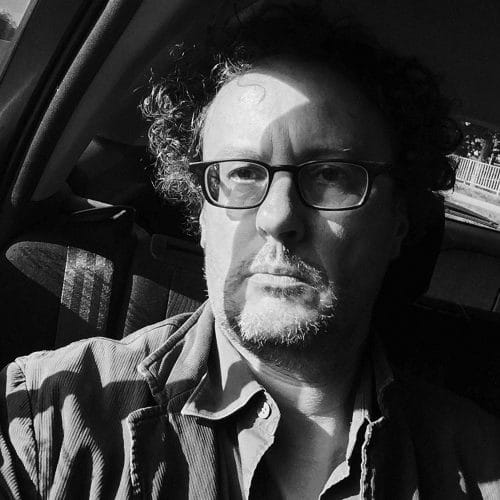
Between 1991 and 2001 Pellegrin was represented by Agence VU in Paris. In 2001 he became a Magnum Photos nominee and a full member in 2005. He was a contract photographer for Newsweek for ten years.
Pellegrin is a winner of many awards, including ten World Press Photo awards and numerous Photographer of the Year awards, a Leica Medal of Excellence, an Olivier Rebbot Award, the Hansel-Meith Preis, and the Robert Capa Gold Medal Award. In 2006, he was assigned the W. Eugene Smith Grant in Humanistic Photography. He lives in London.
His books include: 100 Photos of Paolo Pellegrin for Press Freedom (Reporters Sans Frontières, France, 2013); Paolo Pellegrin (Kunstfoyer der Versicherungskammer Bayern 2012); Dies Irae (Contrasto, Italy, 2011); Photo Poche (Actes Sud, France, 2010); As I Was Dying (Actes Sud, France, 2007); Double Blind (Trolley, 2007); Kosovo 1999-2000: The Flight of Reason (Trolley, USA, 2002); L’au delà est là (Le Point du Jour, France, 2001); Cambogia (Federico Motta Editore, Italy, 1998) and Bambini (Sinnos, Italy, 1997).
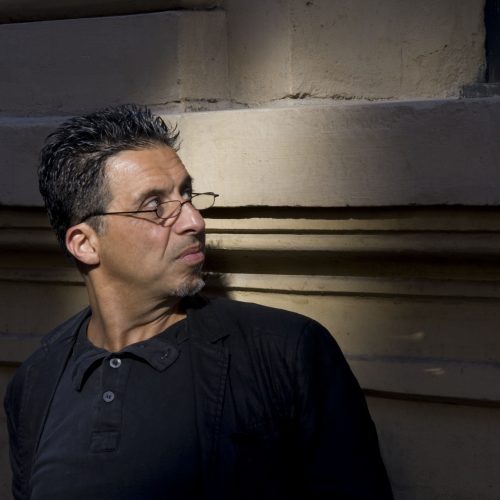
In 1978 Pinkhassov joined the Moscow Union of Graphic Arts and obtained the status of an independent artist. His work was noticed by the prominent Russian filmmaker Andrei Tarkovsky, who invited Pinkhassov to the set to make a reportage about his film Stalker (1979).
Pinkhassov moved permanently to Paris in 1985. He joined Magnum Photos in 1988. He works regularly for the international press, particularly for Geo, Actuel and The New York Times Magazine. His book, Sightwalk, explores individual details, through reflections or particular kinds of light, often approaching abstraction.
A discussion of Pinkhassov’s work on Instagram recently appeared in the New York Times, in an article penned by Teju Cole.
Education
1971 Cinematography, Superior Institute of Cinematography (VGIK), Moscow, Russia
Awards
1995 Bourse de la Ville de Paris
1993 World Press Photo (artistic category award)
1993 Society of News Design Award of Excellence, USA
Exhibitions
2008 Just light like, Centre of Contemporary Art, Winzavod, Moscow
2007 L’Image d’Après, Cinémathèque Française, Paris, France
1988 Center of Photography, Geneva, Switzerland
1988 Asie Centrale – Galerie Picto, Paris, France
1987 Cité Internationale des Arts, Paris, France
1979 Maison des Hommes de Lettres, Moscow, Russia
1979 Tour Kiek in de Kök, Tallinn, Estonia
Books
2006 Nordmeer, Mare, Germany
1998 Sightwalk, Phaidon Press, UK
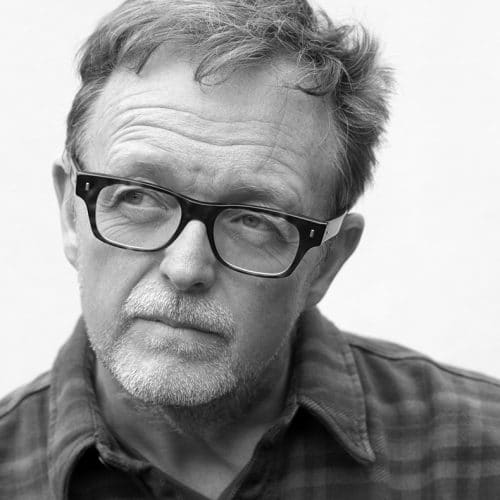
After graduating, he travelled for two years around South-East Asia and Australia. To support himself Power tried a number jobs (he was an English teacher, a television actor and a fish farm attendant in Hong Kong; he painted cinema murals in Bangkok; produced large numbers of identical paintings for others to sell as their own in the Australian outback (very questionable, this one!) and ended up running the camera department of a large chemist in Bankstown, in the Western Suburbs of Sydney). While travelling Power began to realise he enjoyed using a camera more than a pencil and decided to ‘become a photographer’ on his return to England, two years later, in 1983.
He then worked in the editorial and charity markets for nearly ten years, before he began teaching in 1992. This coincided with a shift towards long-term, self initiated projects which now sit comfortably alongside a number of large-scale commissions in the industrial sector. For many years his work has been seen in numerous galleries and museums across the world, and is in several important collections, both public and private, including the Arts Council of England, the British Council, the Victoria and Albert Museum, Los Angeles County Museum of Art, Milwaukee Art Museum, and Marrakech Museum of Photography and Visual Art.
To date Power has published eight books: The Shipping Forecast (1996), a poetic response to the esoteric language of daily maritime weather reports; Superstructure (2000), a documentation of the construction of London’s Millennium Dome; The Treasury Project (2002), about the restoration of a nineteenth-century historical monument: 26 Different Endings (2007), which depicts those landscapes unlucky enough to fall just off the edge of the London A-Z, a map which could be said to define the boundaries of the British capital; The Sound of Two Songs (2010), the culmination of his five year project set in contemporary Poland following her accession to the European Union; Mass (2013), an investigation into the power and wealth of the Polish Catholic church; Die Mauer ist Weg! (2014), about chance and choice when confronted, accidentally, with a major news event – in this case the fall of the Berlin Wall, and Destroying the Laboratory for the Sake of the Experiment (2016), a collaboration with the poet Daniel Cockrill about pre-Brexit England.
In 2007 he tried his hand at curating. Theatres of War featured the work of five artists whose work is concerned with contemporary conflict and surveillance. It opened, appropriately, at Oskar Schindler’s former enamel factory as the keynote exhibition of Krakow Photomonth, Poland.
Mark Power joined Magnum Photos as a Nominee in 2002, and became a full Member in 2007. Meanwhile, in his other life, he is visiting Professor of Photography at the University of Brighton, a city on England’s south coast where he lives with his partner Jo, their children Chilli (b.1998) and Milligan (b.2002) and their dog Kodak.
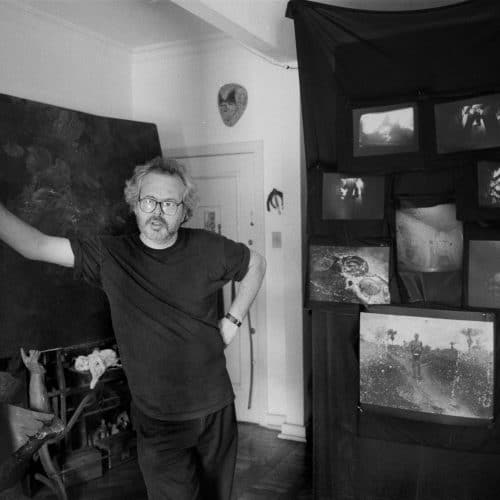
Rio Branco was a freelance photographer and director of photography for movies when he embarked on documentary photography and was soon noticed for the dramatic quality of his color work. In 1980, he became an associate of Magnum Photos. Fascinated by places of strong contrast, in the power of tropical colors and light, he made Brazil his main area of exploration. In 1985, he published Dulce Sudor Amargo, a book in which he drew a parallel between the sensual, vital side of Salvador da Bahia and the historical side of the city, which, at the time (1979) was inhabited by prostitutes and the fringe elements of society. It is an essay on life and death, on the scars left behind by time and by living. The photographer’s fascination for these places of strong contrast essentially resides in the power of the tropical colors and light, which he conveys by means of his pictorial sensibility.
Rio Branco’s obsession with the material power of images continued with Nakta in 1996, a book exploring the theme of bestiary in man and animal, which marked a move away from a documentary approach. He followed this with a visual and poetic project fueled by a happy encounter with Louis Calaferte’s poem Nuit Close, a collaboration that won the Prix du Livre Photo in Arles. Silent Book, published in 1997, presents tableaux of bodies and spaces affected by time; decrepitude is magnified by the light, and wounded flesh, ageing, and death haunt the work through earthy and blood red colors.
His book Entre os Olhos o Deserto demonstrates an evolution towards a hybrid form using photography and video images extracted from Rio Branco’s experimental films. Similarly, his exhibitions function as installations, a concept that is crucial to his work, so that – without neglecting the importance of the single image – creating a discourse through images is the final aim. As his latest book and exhibition, Plaisir la douleur, confirms it.
Awards
1997 Prix du Livre Photo, Rencontres Internationales de la Photographie, Arles, France
1994 VITAE grant (for series Santa Rosa)
1988 Brazilian Film Festival (Best Director of Photography for Memoria Viva and Aboliçao), Brasília, Brazil
1986 Special Prize for video Apaga-te-Sésamo, Festival International Short Films,
Salvador do Bahia, Brazil
1982 Prix Spécial du Jury and the International Critics Award, XI Festival du Film
de Court Métrage et du Film Documentaire, Lille, France
1982 Prix Kodak de la Critique Photographique, Paris, France
1980 Grand Prize of the Photography Triennial, Museum of Modern Art, Sao Paulo, Brazil
Exhibitions
2005 Plaisir la douleur – Maison européenne de la Photographie, Paris, France
2004/05 Gritos Surdos – Galeria Milan Antonio, Sao Paulo, Brazil;
Rencontres Internationales de la Photographie, Arles, France
2003 Door in Darkness – Aperture’s Burden Gallery, New York, USA
2002 Objetos Diretos – Galeria Paulo Fernandes, Rio de Janeiro, Brazil
2001/05 Nakta – Galeries Fnac Rio de Janeiro, Brazil; Toulouse, France; Paris, France
2001 Gritos Surdos – Centro Portugueses de Fotografia, Porto, Portugal
2000 Door into Darkness – Hellenic American Union, Athens, Greece
2000 Pele do Tempo – Centro de Arte Hélio Oiticica, Rio de Janeiro, Brazil
2000/04 Beauty the Beast – William Benton Museum, University of Connecticut,
USA; Art Institute of Boston, USA; Haggerty Museum of Art,
Marquette University, Milwaukee, USA
1999/01 Entre los Ojos – Fundacion La Caixa, Barcelona, Spain; Fundacion
La Caixa, Palma de Majorque, Spain; Centro Insular de Culura, Las Palmas
de Gran Canaria Spain; Sala de Exposiciones Alameda, Malaga, Spain;
Colexio de Fonseca, Santiago de Compostella, Spain, Centro Cultural de la Villa,
Madrid, Spain
1997/98 Nakta – D’Amelio Terras Gallery, New York, USA; Galleria Oliva Arauna,
Madrid, Spain; Rena Bransten Gallery, San Francisco, USA
1993/96 Out of Nowhere – Ludwig Forum, Aachen, Germany; IFA Gallery, Stuttgart,
Germany; Museu de Arte Moderna do Rio de Janeiro, Brazil; Fotografie Forum ,
Frankfurt, Germany
1993 Bestiario – Centro de estudios Romulo Gallegos, Caracas, Venezuela
1991 Petites réflexions sur une certaine bestialité – Rencontres d’Arles, France
1988 Suadouro – Galerie 1900-2000, Paris, France
1987 Coraçao espelho da carne – Fotoptica, Sao Paulo, Brazil; Fotogaleria Funarte,
Rio de Janeiro, Brazil
1985 Coeur miroir de la chair – galerie Magnum, Paris, France
1978/79 Negativo Sujo – Escola de Artes Visuals, Rio de Janeiro, Brazil; Theater Castro
Alves, Salvador do Bahia, Brazil; Nucleo de Arte Contemporanea, Joao Pessao,
Brazil, Museu de Arte, Rio de Janeiro, Brazil
1974 Photographs – Galeria Grupo B, Rio de Janeiro, Brazil
Books
2005 Plaisir la douleur, éditions Textuel, France
2002 Entre os Olhos, o Deserto, Cosac & Naify, Brazil
2002 Gritos Surdos, Centro Portugues de Fotografia, Portugal
1999 Pele do Tempo, Centro de Arte Hélio Oiticica, Brazil
1998 Miguel Rio Branco, Aperture, USA
1997 Silent Book, Cosac & Naify, Brazil
1996 Nakta, Multiprint Grafica e Editoria Ltda., Brazil
1985 Dulce Sudor Amargo, Fondo de Cultura Economico, Mexico
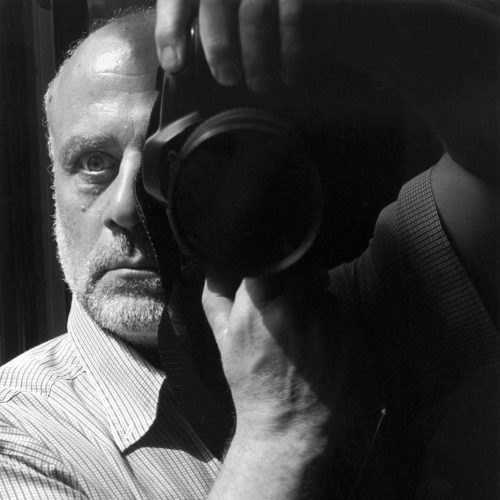
Scianna moved to Milan in 1966. The following year he started working for the weekly magazine L’Europeo, first as a photographer, then as a journalist from 1973. He also wrote on politics for Le Monde Diplomatique and on literature and photography for La Quinzaine Littéraire.
In 1977 he published Les Siciliens in France and La Villa Dei Mostri in Italy. During this period, Scianna met Henri Cartier-Bresson, and in 1982 he joined Magnum Photos. He entered the field of fashion photography in the late 1980s and at the end of the decade he published a retrospective, Le Forme del Caos (1989).
Scianna returned to exploring the meaning of religious rituals with Viaggio a Lourdes (1995), then two years later he published a collection of images of sleepers – Dormire Forse Sognare (To Sleep, Perchance to Dream). His portraits of the Argentinean writer Jorge Luis Borges were published in 1999, and in the same year the exhibition Niños del Mundo displayed Scianna’s images of children from around the world.
In 2002 Scianna completed Quelli di Bagheria, a book on his home town in Sicily, in which he tries to reconstruct the atmosphere of his youth through writings and photographs of Bagheria and the people who live there.
Awards
1966 Prix Nadar (for Feste Religiose in Sicilia), France
Exhibitions
2004 Pensar America III – Casa de América, Madrid, Spain
2003 Ferdinando Scianna – Centre Cultural Tecla Sala, Barcelona, Spain
2000 Altre Forme del Caos – Cantieri Culturali alla Zisa, Palermo, Italy
Books
2003 Quelli di Bagheria, Peliti Associati, Italy
2002 Mondo Bambino, L’arte a stampa, Italy
2001 Obiettivo Ambiguo, Rizzoli, Italy
1999 Niños del Mundo, Ayuntamiento De La Coruña, Spain
1999 Jorge Luis Borges, Franco Sciardelli, Italy
1997 Dormire Forse Sognare, Art&, Italy ; (To Sleep Perchance to Dream), Phaidon, UK
1996 Viaggio a Lourdes, Mondadori, Italy
1995 Altrove: Reportage Di Moda, Federico Motta, Italy
1993 Marpessa, Leonardo Arte, Italy
1990 Men and Trucks, Iveco, Italy
1989 Leonardo Sciascia, Franco Sciardelli, Italy
1989 Le Forme del Caos, Art & SRL, Italy
1988 Kami, L’Immagine, Italy
1988 Città del Mondo, Bompiani, Italy
1988 Ore di Spagna (with Leonardo Sciascia), Pungitopo, Spain
1987 L’Instante e La Forma, Ediprint, Italy
1984 Henri Cartier-Bresson: Portraits (with André Pieyre de Mandiargues), Collins, UK
1984 Il Grande Libro della Sicilia, Mandadori, Italy
1983 I Grandi Fotografi : Ferdinando Scianno, Gruppo Editoriale Fabbri, Italy
1977 I Siciliani, Einaudi, Italy; (Les Siciliens), Editions Denoël, France
1965/87 Feste Religiose in Sicilia (with Leonardo Sciascia), Leonardo da Vinci Arte,
Italy; L’Immagine Editrice, Italy

In 1998, although nothing predicted he would turn to journalism, Sessini arrives in Paris. Gamma photo agency gives him the opportunity to cover the ongoing conflict in Kosovo.
Sessini has since then covered most of the international current events: Palestine, Iraq (from 2003 to 2008), Aristide’s fall in Haiti (2004), the conquest of Mogadishu by the Islamic militias and the war in Lebanon (2006).
Sessini’s work is immediately internationally acknowledged. It is published by prestigious newspapers and magazines, including Newsweek, Stern, Paris-Match as well as Le Monde and the Wall Street Journal.
His photography also leads to single exhibitions at the Visa Photo Festival in Perpignan, at the Rencontres d’Arles, the Bibliothèque Nationale François-Mitterrand, as well as with the French Ministry of Culture.
In 2008, Jerome Sessini started the Mexican project, So far from God, too close from the US, a dive into the drug cartels’ war in Mexico. This still-ongoing project has already been awarded twice with the F-Award and a Getty Grant.
From this direct confrontation with violence, Sessini has recognized a state of things which is at the heart of his work, “Ordinary fellows are always those losing, either it being in Iraq, Mexico or France”.
Evolving within an uncertain balance of cynical realism and upset, Sessini is very careful with the “rightness” of his photographic work. He rejects idealism and otherworldliness, which do not take into account some pieces of reality.
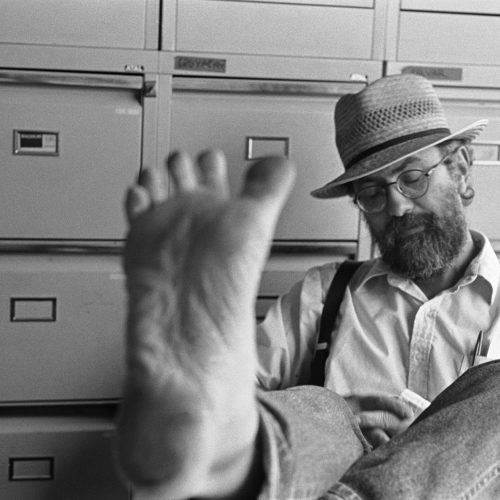
A stint of volunteer work in Calcutta in 1976 provoked Towell to photograph and write. Back in Canada, he taught folk music to support himself and his family. In 1984, he became a freelance photographer and writer focusing on the dispossessed, exile and peasant rebellion. He completed projects on the Nicaraguan Contra war, on the relatives of the disappeared in Guatemala, and on American Vietnam War veterans who had returned to Vietnam to rebuild the country. His first published magazine essay, Paradise Lost, exposed the ecological consequences of the catastrophic Exxon Valdez oil spill in Alaska’s Prince William Sound. He became a Magnum nominee in 1988 and a full member in 1993.
In 1996, Towell completed a project based on ten years of reportage in El Salvador, followed the next year by a major book, Then Palestine. His fascination with landlessness also led him to the Mennonite migrant workers of Mexico, an eleven-year project completed in 2000.
With the help of the inaugural Henri Cartier-Bresson Award, he finished a second highly acclaimed book on the Palestinian-Israeli conflict in 2005, and in 2008 released the award-winning The World From My Front Porch, a project on his own family in rural Ontario where he sharecrops a 75-acre farm.
Awards
2011 Paul de Hueck and Norman Walford Career Achievement Award, Ontario Arts Foundation
2010 Magnum Foundation Emergency Fund Award
2009 The World From My Front Porch- One of ten best photo books of 2008, Photo-eye
2009 The World From My Front Porch- And/or Photography Book Award (Kraszna-Krausz Foundation, UK- shortlisted)
2009 T he World From My Front Porch- One of 50 Best photo books of the year. Festival Of The Photograph. Charlottesville, Virginia
2008 One of the year’s best pictures, Photo District News
2007 Achievement In Filmmaking Award, New York Independent Film And Video Festival
2007 Alicia Patterson Award (USA, Finalist)
2006 PDN Photo Annual: One of the year’s best projects
2005 Prix Nadar (best photography book published in France 2005.)
2003 Henri Cartier-Bresson Award (France)
2002 Roloff Beny Book Award (Canada)
2001 British Design and Art Direction (D&AD) Award London, UK (1st Prize)
2000 Society for News Design Award, La Nacion (Argentina)
2000 Photo-eye Award, Citation of Excellence (USA)
1999 Hasselblad Foundation Award (Sweden)
1999 Roloff Beny Book Award (Canada)
1999 POY (Pictures of the Year, University of Missouri) special recognition, Canon Photo Essayist
1999 POY Best Use of Photography in Books
1998 Alfred Eisenstadt Award; Portraiture, Columbia University, NYC, (1st prize)
1998 Pictures of the Year Foundation, University of Missouri; Pictorial (1st prize)
1998 Pictures of the Year Foundation, University of Missouri; Feature Stories (2nd prize)
1998 Overseas Press Club, New York, Citation of Excellence.
1998 Society of Publication Designers (SPD) Magazine of the Year, NY Times, BEING 13
1998 SPD- Merit Award, New York Times Magazine
1997 Maine Photographic Workshops, Golden Light Award for El Salvador, best monograph/book of 1997
1997 SPD- Merit Award, LIFE MAGAZINE, Feature Story
1996 Pictures of the Year Foundation, Special Recognition, Canon Photo Essayist
1996 Oskar Barnack Leica Award (Germany)
1996 El Mundo Award (Spain)
1995 Ernst Haas Foundation Award (USA)
2000-95-94 Canadian National Magazine Awards (Gold)
1995-93-91 Western Canada magazine Awards (Gold)
1994 Pictures of the Year Foundation, University of Missouri; Canon Photo Essayist (1st prize)
1994 World Press Foundation (Amsterdam); World Press Photo of the Year (1st prize), Daily Life Stories (1st prize), General News Stories (1st prize)
1993 World Press Foundation (Amsterdam); Daily Life Stories (1st prize)
1991 W Eugene Smith Foundation Award (International Centre of Photography, New York)
Authored Books
2008 The World From My Front Porch, Chris Boot (UK)
2008 The Cardboard House, Trolley, (Italy)
2006 In The Wake Of Hurricane Katrina, Archive Of Modern Conflict (UK)
2005 No Man’s Land, Textuel (France) Chris Boot (UK)
2005 Larry Towell, (Magnum Series) Hachette, France
2000 The Mennonites, Phaidon Press (UK, France)
1999 Then Palestine, Aperture (USA); Marval (France)
1997 El Salvador, W.W. Norton/Doubletake Books (USA)
1994 House on Ninth Street, Cormorant Books, Dunvegan, ON
1992 The Prison Poems of Ho Chi Minh, Cormorant Books, Dunvegan, ON
1990 Somoza’s Last Stand, Williams-Wallace Publishers, Stratford, ON
1988 Gifts of War, Coach House Press, Toronto, ON
1983 Burning Cadillacs, Black Moss Press, Windsor, ON
Group Books
2010 Engaged Observers, The J Paul Getty Museum, Los Angeles
2009 Access To Life, Aperture, USA
2007 Magnum Magnum, Thames & Hudson, UK
2007 Magnum 60 years, Magnum (Paris)
2005 Things As They Are, Boot, UK
2004 Magnum Stories, Phaidon, UK
2004 Outside The Ordinary, Aperture, NYC
2003 New Yorkers, Powerhouse, NYC
2003 al gusta de Cartier-Bresson, Fundacio ôla Caixaö, Paris
2002 Aperture At 50, Aperture, NY, USA
2002 Le Photojournalisme Aux Encheres 2002, Thierry de Maigret, Paris, France
2002 This Is New York, Scalo, NYC
2002 The Best of 2002, American Photography, USA
2002 Confronting Views, aurora borealis, Netherlands
2002 La fotografia tra storia e poesi, Mazzotta, Italy
2002 Schattenlicht, GEO, Germany
2002 Endure, The Rockerfeller Foundation, USA
2002 Magnum Football, Phaidon, UK
2002 Non a la pollution, Editions PEMF, France
2001 New York September 11 by Magnum Photographers, Powerhouse, USA
2001 Woman. Running Press, USA
1999 Magnum O, Phaidon UK
1999 Crimes of War, W.W. Norton and Company, USA
1998 Israel 50 Years, Aperture, USA
1998 Hope, Thames and Hudson, USA
1998 War, Presse de la Cite, Paris, France
1997 Guerra Fratricidas, Fundacion Caixa, Spain
1996 Magnum Landscape, Phaidon, UK
1995 The Critical Mirror, World Press Photo 40 Year Anniversary Issue, The Netherlands
1992 Flesh and Blood: Photographer’s Images of their own Families, The Picture Project, New York, USA
1991 Companeros, Cormorant Books, Dunvegan, Ontario
1988 Garden Varieties, Cormorant Books, Dunvegan, Ontario
1988 A Labour of Love, Polestar Books, Winlaw, BC
Catalogues
1997 Larry Towell, Fundacion Caixagalicia, Spain
1988 Gifts Of War, Art Gallery Of Windsor, Windsor, ON
Group Catalogues
2010 Engaged Observers, Getty Museum, Los Angeles, CA
2003 Foundation HCB, Paris France, 2003
2001 Spirit of Religion, Photographic Centre, Skopelos, Greece
1997 Printemps Palestine, AFAA, France
1997 The Garden of Eden, Noorderlicht Festival, Holland
1996 America Observed, 92nd Street Y, NYC
1994 Carnets de Voyage, CMCP, Ottawa
1994 Bambini de Guerra, Contrasto, Milan, Italy
1990 Le Mois de la Photo, Montreal, Que
Recent Selected Solo Exhibitions
2011 Royal Ontario Museum (ROM), Toronto
2011 Museum London, London, ON
2010 Palazzo dei Duchi dÆAcquivia, Atri, Abruzzo, Italy
2010 Stephen Bulger Gallery, Toronto, ON
2009 McDonough Museum Of Art, Youngstown, Ohio
2008 George Eastman House, Rochester, NY
2008 Stephen Bulger Gallery, Toronto
2007 University Of Kentucky Art Museum, Lexington KY, USA
2007 Arthur Ross Gallery, Pennsylvania, USA
2006 Le theatre de la photographie et de l’image, Nice, France
2006 FOAM, Amsterdam, Holland
2006 Galerie Zola, Aix-en-provence, France
2005 L’Espace Malraux Scene Nationale de Chambery, Chambery, France
2005 No ManÆs Land, Fondation Henri Cartier-Bresson, Paris, France
2005 No Mans Land, Stephen Bulger Gallery, Toronto, ON
2005 Projects, Michael Gibson Gallery, London, ON
2004 Alice Austin Museum, New York City, USA
2003 Festival Fotografia, Rome
2003 The Caixa Forum, Barcelona, Spain
2003 Oratorio del Caravita, Rome, Italy
2003 Presentation House, Vancouver, BC
2003 Kunsthalle Erfurt, Erfurt, Germany
2002 Canada House (Canadian High Commission) London, UK
2002 Leaf Rapids National Exhibition Centre, Leaf Rapids, Manitoba
2002 University of Northern British Colombia, Prince George, B.C
2002 Gallery Lambton, Sarnia, ON
2002 Leaf Rapids National Exhibition Centre, Leaf Rapids, MA
2001 National Portrait Gallery, Edinburgh, Scotland
2001 Catherine Edelman Gallery, Chicago
2001 The Leica Gallery, New York City
2001 Canadian Museum of Contemporary Photography, Ottawa
2001 McLaren Art Centre, Barrie, ON
2000 Staedtische Gallery, Iserlohn, Germany
2000 Aleppo Photo Festival, Aleppo, Syria
2000 Canadian Embassy, Damascus, Syria
2000 London Regional Art Gallery, London, ON
2000 Perpignan Photo Festival, Perpignan, France
2000 The Leica Gallery, New York City
2000 Stephen Bulger Gallery, Toronto, ON
1999 Cambridge Art Gallery, Cambridge, ON
1998 Aubenades de la Photographie, Aubenas, France
1998 Elvehjem Museum of Art, Madison, Wisconsin, USA
1998 Wisconsin Union Gallery, Madison, Wisconsin, USA
1998 Vox Populi, Montreal, Que
1998 Sala Caixa Galicia, Lugo, Spain
1998 Circulo de Bellas Artes, Madrid, Spain
1998 Sala Caixa Galicia, Vigo, Spain
1997 Manifestations Culturelles, Nablus, Ramallah, East Jerusalem, (West Bank)
1997 The Leica Gallery, New York City
1997 Stephen Bulger Gallery, Toronto, ON
1997 Sala de la Expositions Kiosko Alfonso, La Coruna, Spain
1997 Montparnesse FNAC, Paris, France, national tour
1997 Noorderlicht Photo Festival, Gronigen, The Netherlands
1996 Zelda Cheatle Gallery, London, UK
1996 Stephen Bulger Gallery, Toronto, ON
1995 Gallery “Kimon”, Athens, Greece
1995 Das Bildforum Foto Festival, Herten, Germany
1994 The Photo Passage, Harbourfront, Toronto, ON
1994 Ecole Sup “le 15”, Brussels, Belgium
1994 Shepherd College, Shepherdstown, W. Virginia, USA
1994 Retrospective, Nieuwekerk Cathedral, Amsterdam, The Netherlands
1994 Recontres Photographiques de Normandie, Abbey St. Ouen, Rouen, France
1994 Canadian Museum of Contemporary Photography, Ottawa
1992 National Library of Canada, Ottawa
1992 The Photo Passage, Harbourfront, Toronto
1991 Forest City Gallery, London, ON
1991 Maison de la Culture Plateau, Montreal, Que
1991 Spencer Gallery, University of Western Ontario, London, ON
1991 Christ Church, Hamilton, ON
1990 Southern Alberta Art Gallery, Lethbridge, Alta
1990 Dunlop Gallery, Regina, Sask
1989 Toronto Photographer’s Workshop, Toronto
1989 Sarnia Public Art Gallery, Sarnia, ON
1989 London Regional Art Gallery, London, ON
1989 The Photographer’s Gallery, Saskatoon, Sask
1988 Art Gallery of Windsor, Windsor, ON
Selected Group Exhibitions (1997-2013)
2013 Sala Gasco Arte Contemporaneo, Santiago, Chile
2013 Monash Gallery Of Art, Victoria, Australia
2012 Sydney Powerhouse Museum, Sydney, Australia
2012 Hangaram Museum, Seoul, South Korea
2012 Lumiere Brothers Center For Photography, Moscow, Russia
2011 Les Recontres dÆ Arles, France
2011 Perpignan, France (slide show)
2010 African American Museum and Library, Oakland, CA
2010 Bcc Berliner Congress Center, Berlin, German
2010 United Nations, New York City, New York
2010 Asahi Mullioin Gallery, Tokyo, Japan
2010 Getty Museum, Los Angeles, CA
2010 Vancouver Art Gallery, Vancouver, BC
2010 African American Museum, Oakland, CA
2009 Contact Photo Festival, Toronto
2009 Pont de la Machine, Geneva, Switzerland
2009 Matadero Museu, Madrid, Madrid, Spain
2009 Stenersen Museum, Oslo, Norway
2009 Ara Pacis, Rome, Italy
2008 Accueillie par le Musee de L’Homme, Paris, France
2008 Vancouver Art Gallery, Vancouver BC
2008 PathT Palace, Buxelles, Belgium
2008 Access To Life, Corcoran Museum Of Art, Washington DC
2007 Nicephore, Clermont-Ferrand, Puy de Dome, France
2007 Museum London. London, ON
2007 Art Gallery Of Windsor, Windsor, ON
2007 Paris Photo Fair, Le Louvre, Paris, France
2006 Nobel Peace Center, Oslo, Norway
2006 Museum GEO-CHARLES, Echirolles, France
2006 Remembering 911- 1 Liberty Plaza, NY, NY
2006 Lazienki Park, Warsaw, Poland
2005 Paris Photo Fair, Le Louvre, Paris, France
2005 Leica Gallery, NYC, USA
2005 Dfphoto, San Sebastian, Spain. Cervantes Festival, Alca de Henares, Spain
2004 Open Society Institute, New York City, USA
2004 Vancouver Image Works Gallery, Vancouver, BC
2004 Philadelphia Museum Of Art, Philadelphia, USA
2004 Michael Gibson Gallery, London, ON
2004 The Museum Of The City Of New York, NYC. USA
2003 Caixaforum, Barcelona, Spain
2003 The Fleeting Moment, Fundacion Agnellion, Torino, Italy
2003 Museo Nationale del Cinema, Turin, Italy
2003 Pace/Macgill Gallery, NYC, USA
2003 The Leica Gallery, Prague, Czeck Republic
2003 Paris Photo, Paris France
2003 Fundacion ôla Caixaö, Barcelona, Spain
2003 Catherine Edelman Gallery, Chicago, USA
2003 Pictou Gallery, Toronto, ON
2003 Weltkulturerbe Voelklingen Hutte, Germany
2003 The Henry Cartier-Bresson Foundation, Paris, France
2003 Aperture At 50, SothebyÆs, NYC
2003 The Photographer’s Gallery, London, UK
2002 Nihombashi Mitsukoshi, Tokyo, Japan
2002 School of Visual Arts, New York City
2002 Art Gallery of Windsor, Windsor, ON
2002 New York State Museum, New York City
2002 Chicago Historical Society, Chicago, Ill
2002 Forest City Gallery, London. ON
2002 Fondazione Nazionale Italiana per la Fotografia, Torino, Italy
2002 Noorderlicht Photo Festival, Gronigen, The Netherlands
2002 Housatonic museum, Bridgeport, CT. USA
2002 The Whopping Hydro Electric Plant Gallery, London, UK
2002 Musee de l’Elysee, Lausanne, Switzerland
2002 National Arts Club, New York City, USA
2002 Art Gallery of Ontario, Toronto, Canada
2002 Cedar Rapids Museum of Art, Cedar Rapids, Iowa
2002 The Harbourfront, Toronto, ON
2001 Spirit of Religion, Cinema Museum, Saronique, Greece
2001 National Photography Centre, Sopelos, Greece
2001 New York Historical Society, New York City
2001 Canadian Museum of Contemporary Photography, Ottawa, Canada
2001 Here In New York, Spring Street Gallery, New York City, NY
2000 The Barbican, London, UK
2000 Seiba Gallery, Tokyo, Japan
2000 The Museum of Art, Osaka, Kintetsu, Japan
2000 Michael Gibson Gallery, London, ON
2000 Portland Museum of Art, Portland ME
2000 Beaux Arts of Charleroi and Brussels 2000 Committee; Brussels, Belgium
2000 Biblioteque Nationale de France, Paris, France
2000 New York Historical Society, NYC, USA
2000 The Museum of Art, Osaka, Japan
2000 Palazzo del Esposizioni, Rome, Italy
2000 Kunsthaus Caserne, Zurich, Switzerland
2000 Deichtoraller, Hamburg, Germany
2000 Reina Sofia Museum of Madrid, Madrid, Spain
2000 Botanique, Brussels, Belgium
2000 Louiyana Museum, Copenhagen, Denmark
1999 Art Director’s Club, NYC
1999 The Alternative Museum, NYC
1999 Le Pont Gallery, Aleppo, Syria
1998 Underexposed, Underground Station Zinkensdamm, Stockholm, Sweden
1998 Gallerie du Chateau d’Eau, Toulouse, France
1998 Museum of Jewish Heritage, NYC
1998 The Station Gallery, Whitby, ON
1997 Stephen Bulger Gallery, Toronto
1997 Art Gallery of North York, North York, ON
1997 Galerie d’art du Centre Cultural Universite de Sherbrooke, Sherbrooke, Que
1997 Milton J. Weil Art Gallery, NYC
1997 Musee de Quebec, Quebec City, Que
1997 Kasan Museum Exhibition Centre, Hazelton, BC
1997 The National Arts Club, NYC
1997 Casa de Vacas de Ritiro, Madrid, Spain
1997 Beaverbrook Art Gallery, Fredericton, BC,
1996 Les Paysages de Magnum, Bon Marche, Paris, France
1996 pARTs Gallery, Minneapolis, Minnesota
1996 Kent Gallery, Soho, NYC
1996 Surrey Art Gallery, Surrey, BC
1995 Photographic Centre of Amsterdam, Amsterdam, Holland
1995 The Art Institute of Boston, Boston. Mass
1995 World Press Photo Exhibition; international tour
1995 Galerie St. Etienne, NYC
1994 World Press Photo Exhibition: international tour
1994 Galerie de Chateau, Toulouse, France
1994 Ansel Adams Centre of Photography, San Francisco, CA. USA
1993 World Press Photo Exhibition: international tour
1993 Kilbany Museum, Scotland
1993 Vietnam Veteran’s Administration Hospital, Martinsburg, W. Virginia, USA
1993 Nikon House, NYC
1993 International Centre of Photography (ICP), NYC
1993 Hagerstown College Gallery, Hagerstown, MD., USA
1993 Capocon Resort, Berkley, MD., USA
Collections
The Getty Museum, Los Angeles, CA
The George Eastman House, Rochester, NY
National Museum of Qatar, Qatar
The National Archives Of Canada . Ottawa
Archive Of Modern Conflict, London, UK
Henri Cartier-Bresson Foundation, Paris, France
Montreal Museum Of Fine Arts, Montreal, QC
LÆHoist Collection (France)
Vancouver Art Gallery
The Teutloff Collection, Bielefeld, Germany
Musee Des Beaux-Arts De Montreal
Philadelphia Museum of Art (USA)
National Gallery (Canada)
The Canadian Museum of Contemporary Photography
Art Gallery of Ontario (Canada)
Galerie du Chateau d’Eau (France)
Cedar Rapids Museum of Art (USA)
Noordelicht Collection, Gronigen (Holland)
The Ernst Haas Memorial Collection, Portland Museum of Art (USA)
Elvehjem Museum of Art, Madison, Wisconsin (USA)
Ecole Sup “le 15” (Belgium)
FNAC (France)
Art Gallery of Windsor (Canada)
Canadian Museum of Contemporary Art
Toronto Photographer’s Workshop (Canada)
Private collections
Periodical and magazine publications include:
The New York Times Magazine, Aperture, Photo District News, American Photography, Doubletake, LIFE Magazine, TIME Magazine, Rolling Stone (USA), Das Magazine, Bilanz (Switzerland), Profil (Austria), GEO, Stern, Lux, Max, (Germany), Paris Match, Telerama, Le Monde, Liberacion, Elle (France), Photo Italia (Italy), La Revista (Spain), Canadian Geographic (Canada), Playboy (Japan), The Telegraph, The Independent on Sunday, Granta (UK), The Paris Review (USA).
Performances
2012 Royal Ontario Museum (ROM), Toronto
2012 Visual Studies Workshop, Rochester, NY
2009 Kilcawley Center, McDonough Museum, Youngstown OH
2009 St. Clair College. Performing Arts, Port Huron MI
2009 Jeanne Gordon Theatre, Wallaceburg, ON
2008 George Eastman House, Rochester, NY
2008 Contact Photo Festival, Toronto, ON
2008 Cheeky Monkay. Sarnia. On
2007 University of Kentucky, Lexington, KY
2006 Camera, Toronto, ON
2006 George Eastman House, Rochester
2004 Camera, Toronto, ON
2003 Emily Carr School Of Art and Design, Vancouver, BC
2002 Harbourfront Center, Toronto, ON
2002 Sarnia Library Theatre, Sarnia, ON
2000 Hanover College of the Arts, Hanover, Germany
2000 London Regional Art Gallery, London, ON
1998 Maine Photographic Workshops, Portland, ME
1998 The National Union Of Journalists, Copenhagen, Denmark
1998 University Of Windsor, Windsor, ON
1998 Elvehjem Museum Of Art, Madison, Wisconsin
1997 International Center Of Photography (ICP), NYC
1997 Interfoto Conference, Moscow, Russia
1997 Kiosko Alfonso, La Coruna, Spain
1997 Nororderlicht Photofestival, Gronigen, The Netherlands
1994 National Geographic Annual Conference, Washingon, DC
Discography & Films
2008 The Bike Ride (video installation)
2008 Video Montage (George Eastman House video installation)
2008 The World From My Front Porch (audio CD)
2008 Indecisive Moments (Video Diary Of A Still Photographer) (45 minute DVD)
2005 The Dark Years (audio 2 CD set)
2005 No Man’s Land (installation video)
2005 No Man’s Land (ambient audio CD)
2004 Mary’s Accordion (video)
2004 The Mennonites (audio CD)
1979 Feathers And Bones (LP)
Film Screenings & Festivals (for Indecisive Moments & Train of Thought)
2012 Arles, France
2009 Perspektivet Museum, Tromso, Norway
2009 Toronto Palestinian Film Festival
2009 Palestine Film Festival, London Regional Art Gallery, London ON
2008 Independent Film Center, New York City
2008 Copenhagen DOX, Copenhagen, Denmark
2007 Camera, Toronto
2007 New York Independent Film and Video Festival, NYC Annual Palestinian Film Festival, London, ON
2007 Paraty Photo Festival, Paraty Brazil
Multi-media presentations
2011 Contact Photo Festival, Toronto
2010 Collected Works Live with The Henrys, Drake Hotel, Toronto
2009 Whyte Art Gallery, Banff, Alberta.
2008 Camera Theatre, Toronto
2007 Arles Photo Festival, Arles, France
2007 Festival of the Photograph, Charlottesville, Virginia, USA
2007 Rockefeller Center, NYC
2007 Festival of the Photograph, Charlottesville, Virginia
2006 42nd Street Billboard, Times Square, NYC
2006 Contact Photo Festival, Toronto
2005 42nd Street digital billboard, Port Authority, NYC, USA
2005 Contact Photo Festival, slide show, Toronto
2005 Rute, Andalucia, and Marinaleda; Zornotza, Bizkaia and La lateruena Durangoko, Durango, Spain, slide show
2005 Perpignan Photo Festival, Perpignan, France
2004 Perpignan Photo Festival, Perpignan, France
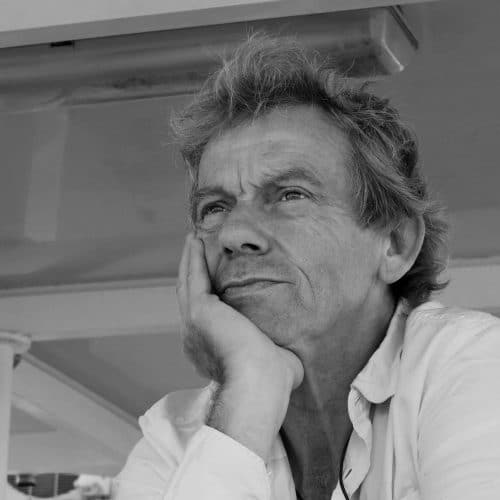
Born in 1960 in France, he began his career as photo reporter in 1985 by collaborating as a freelancer for French magazines. He joins the staff of the Gamma agency from 1991 to 2004. He alternates between societal subjects that he treats in depth while covering French and international actualities. His work has been rewarded several times as his reportage on prematurely born babies, World Press in 1998. Today he is independent once again and continues his collaboration with the press and publishers. Since 2006 he is, as well, the photographer for the show “Rendez-vous en Terre Inconnue” by Frédéric Lopez where he goes to meet indigenous peoples.
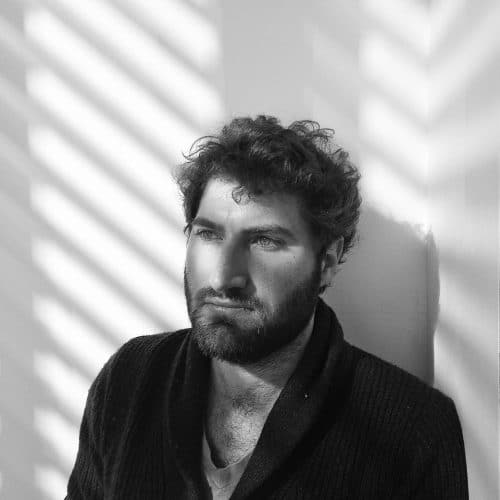
He has won the W. Eugene Smith Grant, the ICP Infinity Award for Young Photographer, the Lumix Freelens Award, as well as awards from World Press Photo, American Photography Annual, The Pulitzer Center, The Center for Documentary Studies at Duke University and Photo District News.
In 2008, he helped organize the book and exhibition Battlespace, a retrospective of largely unseen work of 22 photographers covering Iraq and Afghanistan.
Peter joined Magnum in 2008 and became a full member in 2013.
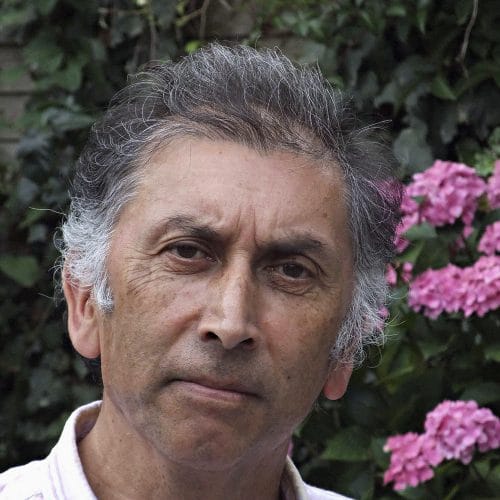
Apart from a trip to Bangladesh in 1973, he worked mainly in Britain in areas concerned with urban poverty and subcultures. In 1975, he worked with EXIT, a collective dealing with social problems in British cities. This involvement culminated in the book Survival Programmes in 1982. He joined the Paris-based Viva agency in 1976. In 1979 he published his first solo book, The Teds; he also edited the Arts Council of Great Britain’s book, About 70 Photographs.
Steele-Perkins joined Magnum Photos in 1979 and soon began working extensively in the developing world, in particular in Africa, Central America, and Lebanon, as well as continuing to take photographs in Britain.
His book, The Pleasure Principle explores Britain in the 1980s and in 1992 he published Afghanistan, which was the result of four trips over four years.
After marrying his second wife, Miyako Yamada, he embarked on a long-term photographic exploration of Japan, publishing Fuji in 2000. A highly personal diary of 2001, Echoes, was published in 2003, and the second of his Japanese books, Tokyo Love Hello, in March 2007.
He continues to work in Britain, documenting rural life in County Durham, which was published as Northern Exposures in 2007. In 2009, he published a collection of work from 40 years of photographing England – England, My England. A new book, on British centenarians, Fading Light was published in 2012.
Steele-Perkins has two sons, Cedric, born 16th November 1990, and Cameron, born 18th June 1992. With his marriage to Miyako Yamada, he has a stepson, Daisuke and a grand-daughter, Momoe.
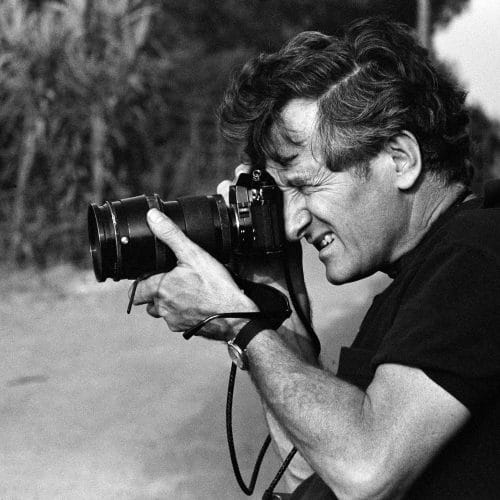
In 1953 his photograph of a painter on the Eiffel Tower appears in Life Magazine. This is his first publication. Invited by Henri Cartier-Bresson and Robert Capa he joins Magnum Photos agency.
In 1955, he travels by road through the Middle East and Afghanistan to India and stays for one year. In 1957 he travels from Calcutta to China making the first of what will be many long stays. His road trip to the East ends in Japan where he finds the subject for what will become his first book, Women of Japan.
In 1960, after a three-month stay in the USSR, he covers the struggles for independence in Algeria and Sub-Saharan Africa. Between 1968 and 1969 he photographs in both South and North Vietnam, one of the rare photographers allowed entry.
In the 80s and 90s, he returns regularly in Orient and Far East, especially in Angkor and Huang Shan, but he also follows the rapid and considerable change of China, a country he has been looking at for thirty years.
In 2011 Marc Riboud makes a dation in payment of 192 original prints made between 1953 and 1977 to the National Museum of Modern Art (Centre Georges Pompidou), Paris. His work has been distinguished by prestigious awards and is exhibited in museums and galleries in Paris, New York, Shanghai, Tokyo, etc.
Marc Riboud passed away in Paris, at 93 years old, on August 30th 2016. The core of his archives will be donated to the National Museum of Asian Arts – Guimet, Paris.


